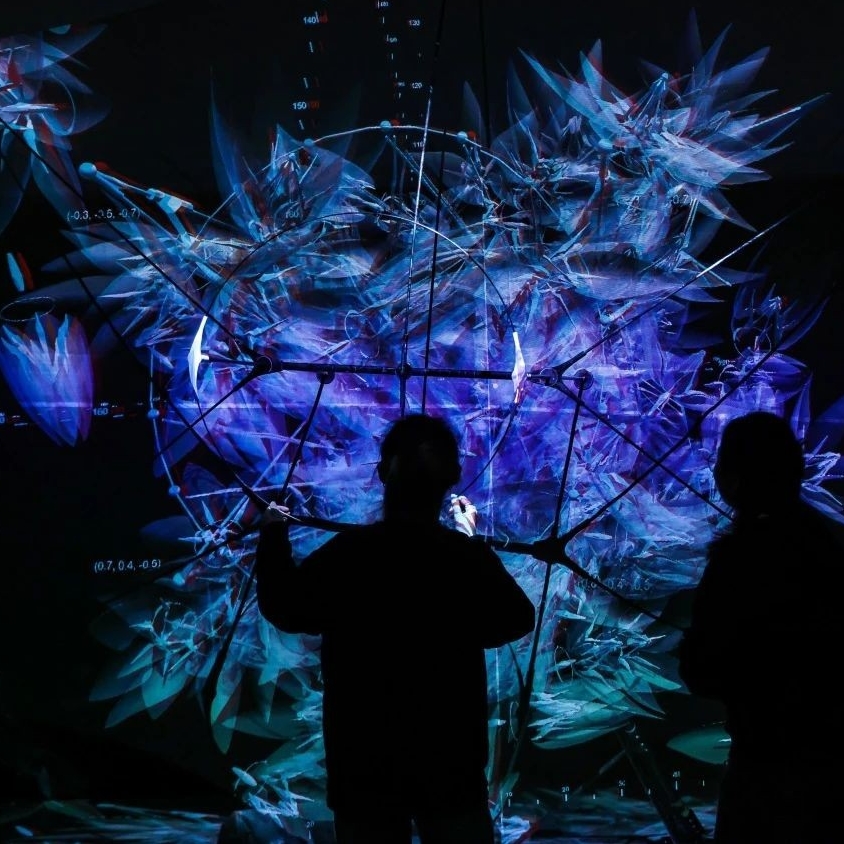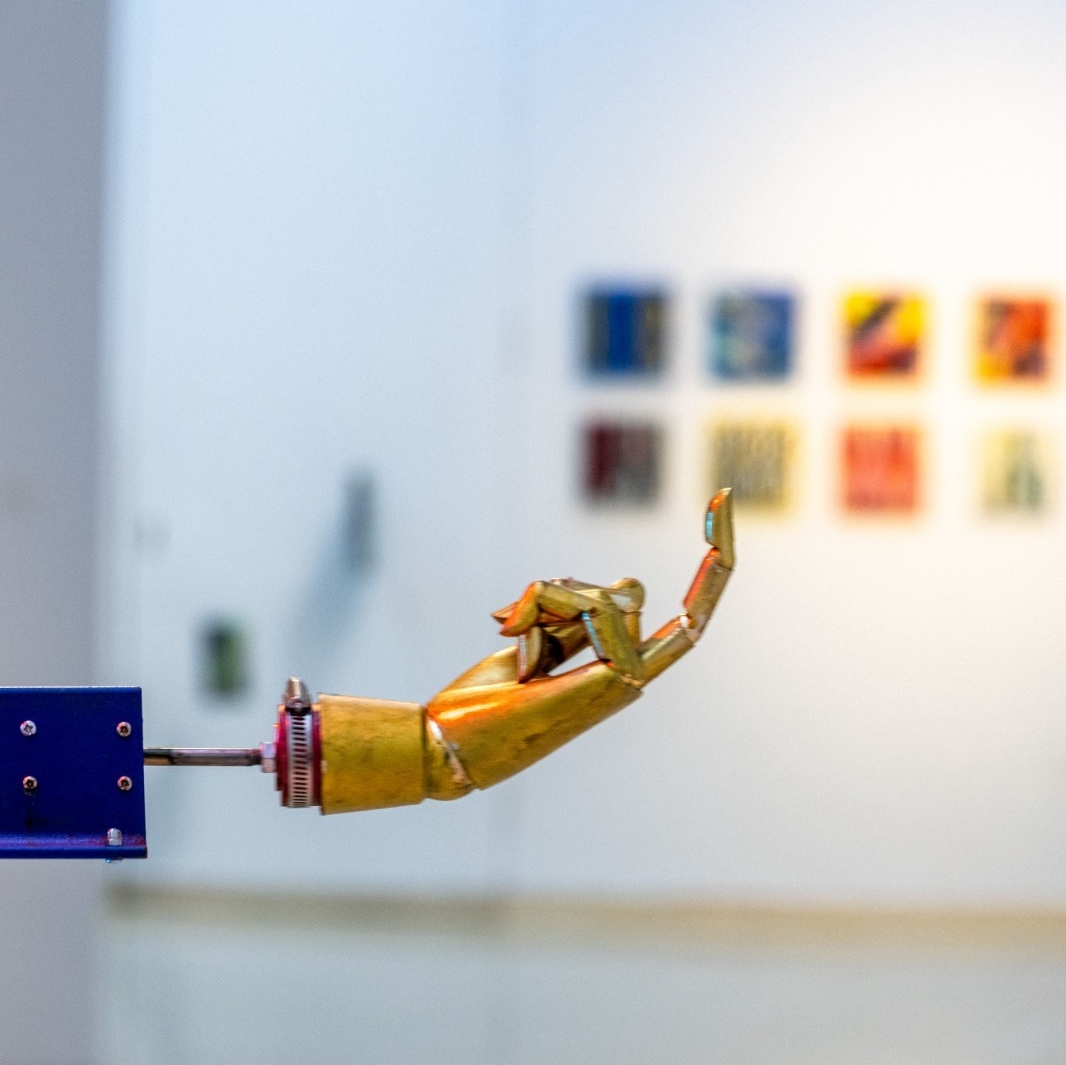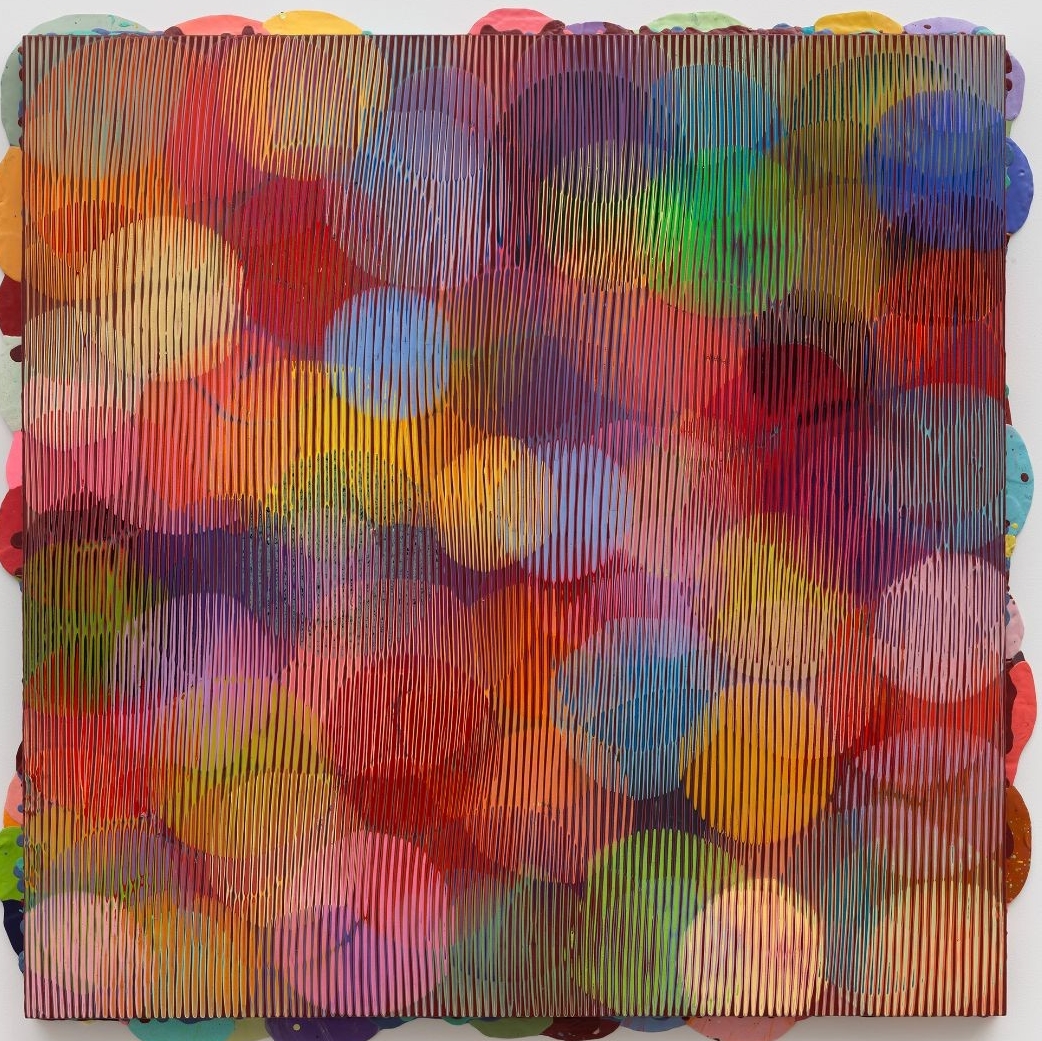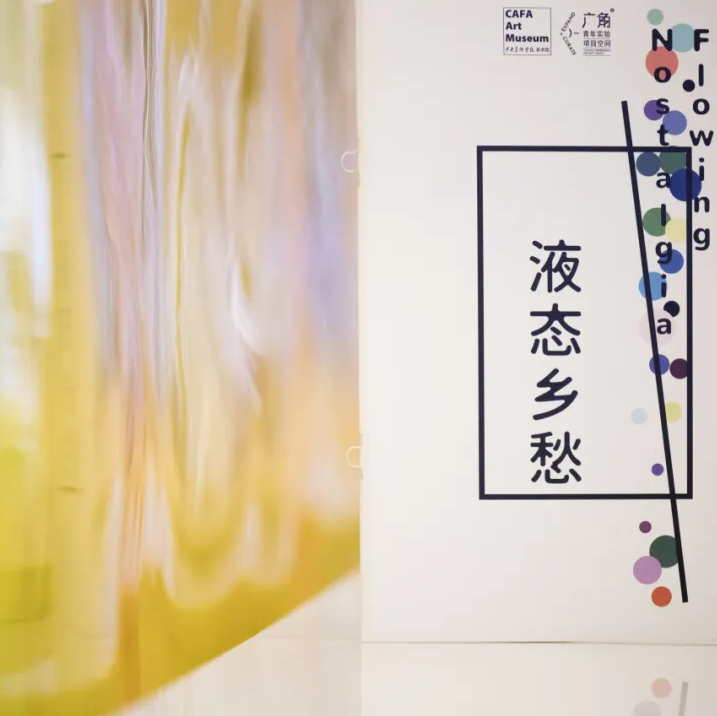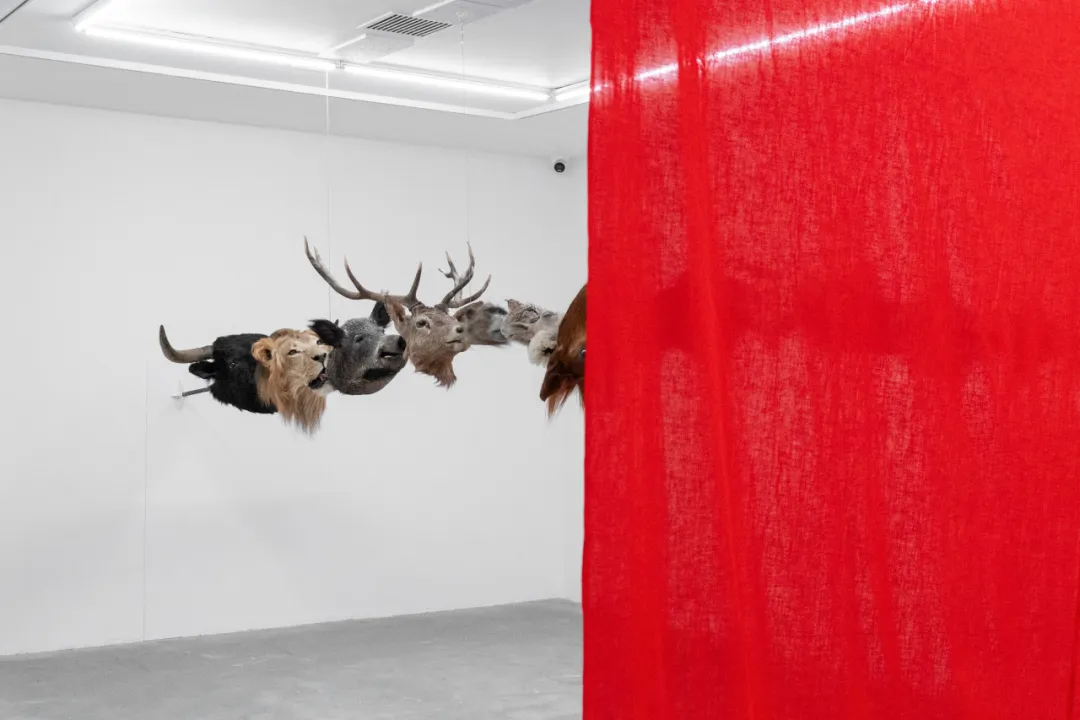 Exhibition View of Thresholds, Flaneur and Whirlpools
Exhibition View of Thresholds, Flaneur and Whirlpools
Wind H Art Center, located in Beijing 798 Art District, unfold a new exhibition Thresholds, Flaneur and Whirlpools on December 27, 2024. This exhibition continues the research of Wind H Art Center on non-physical spaces. From an individual perspective, it constructs regional thinking centered around personal chronicle and local clues. The exhibition features works by Cao Shuyi, Dong Jinling, Feng Zhixuan, Huang Yonging, Daido Moriyama, Tong Yixin, Wu Jian’an, Wu Chuan-Lun, Zhang Wenzhi, Zhao Renhui and Zhu Changquan.
These works do not only reflect the changes of the artists’ vision in the creative process, but they also showcase their multidimensional practices. Each of them is intertwined in style, theme and technique with others, presenting the end or edge of things, leading the audience into an art field full of diversity and tension.
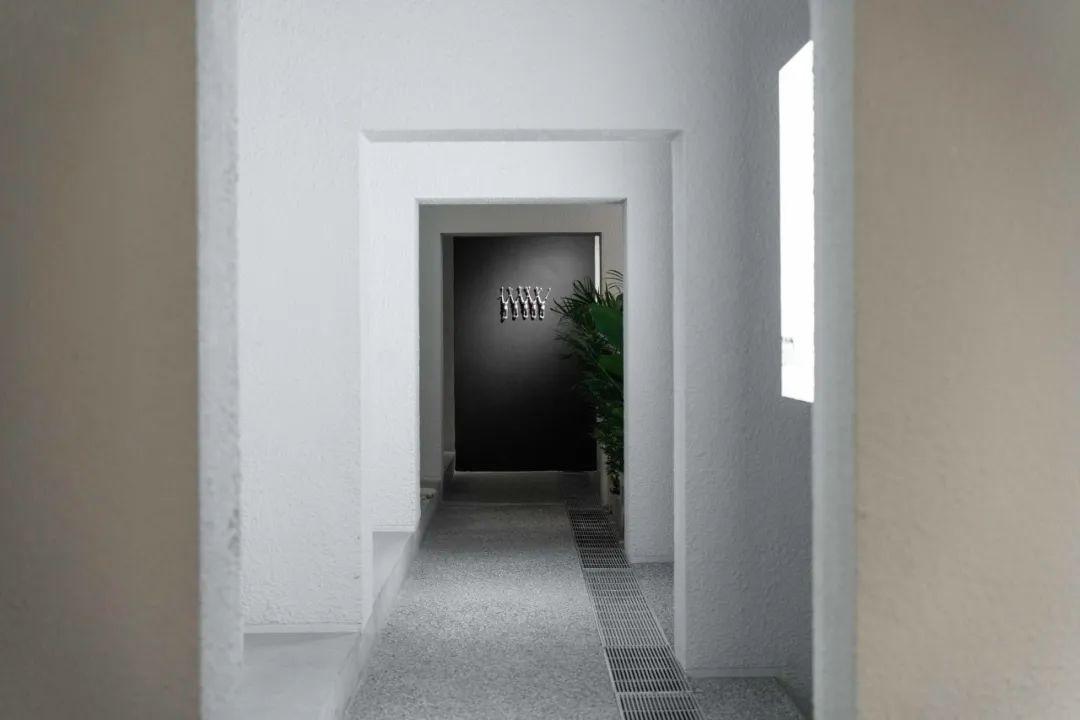
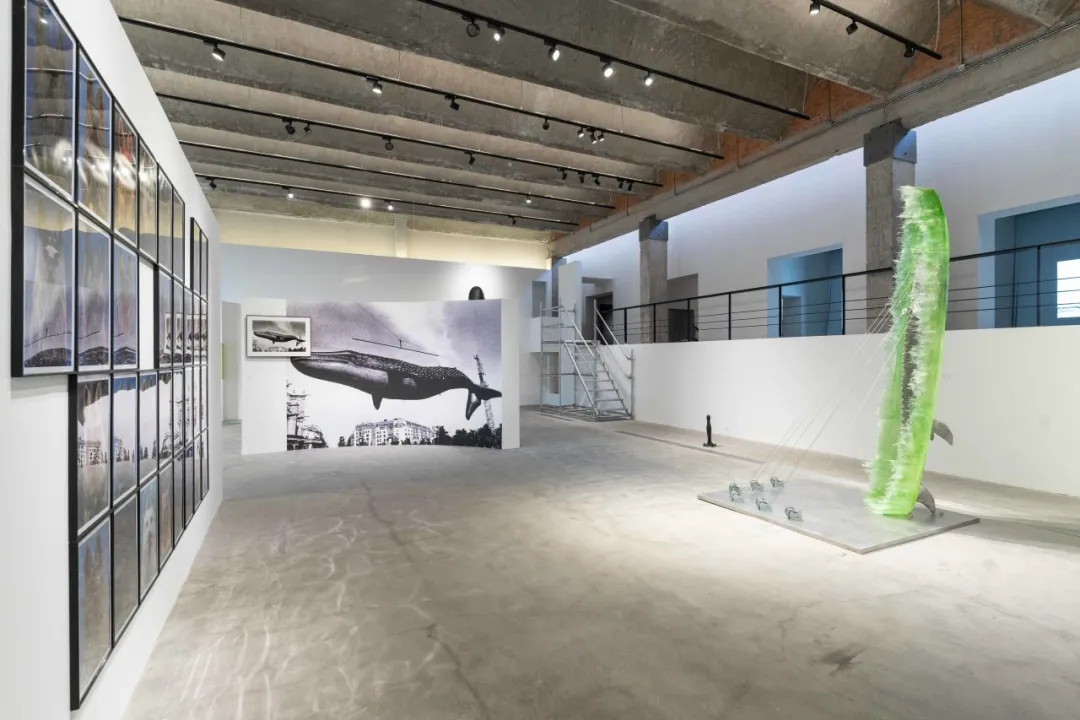
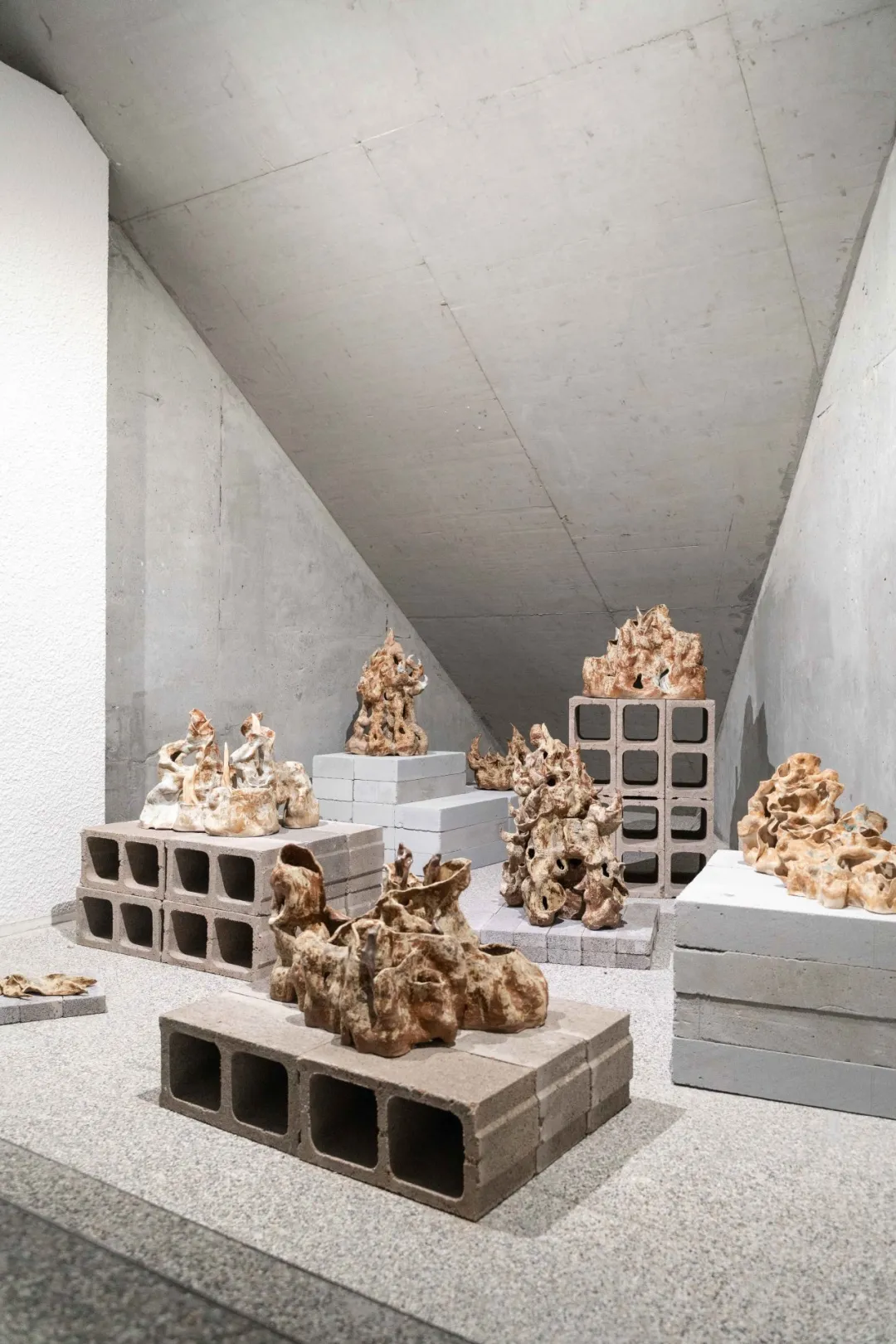 Exhibition View of Thresholds, Flaneur and Whirlpools
Exhibition View of Thresholds, Flaneur and Whirlpools
Thresholds, Flaneur and Whirlpools takes “animals” as a symbol and connection to outline the complex emotional relationships among “human beings”, “society”, and “nature”. Starting from this clue, it explores the blurred and constantly shifting zones between geographical boundaries. Through the narrative network built by the works, it uncovers the internal texture and network generated by the continuous changes and interdependence in the process of development.
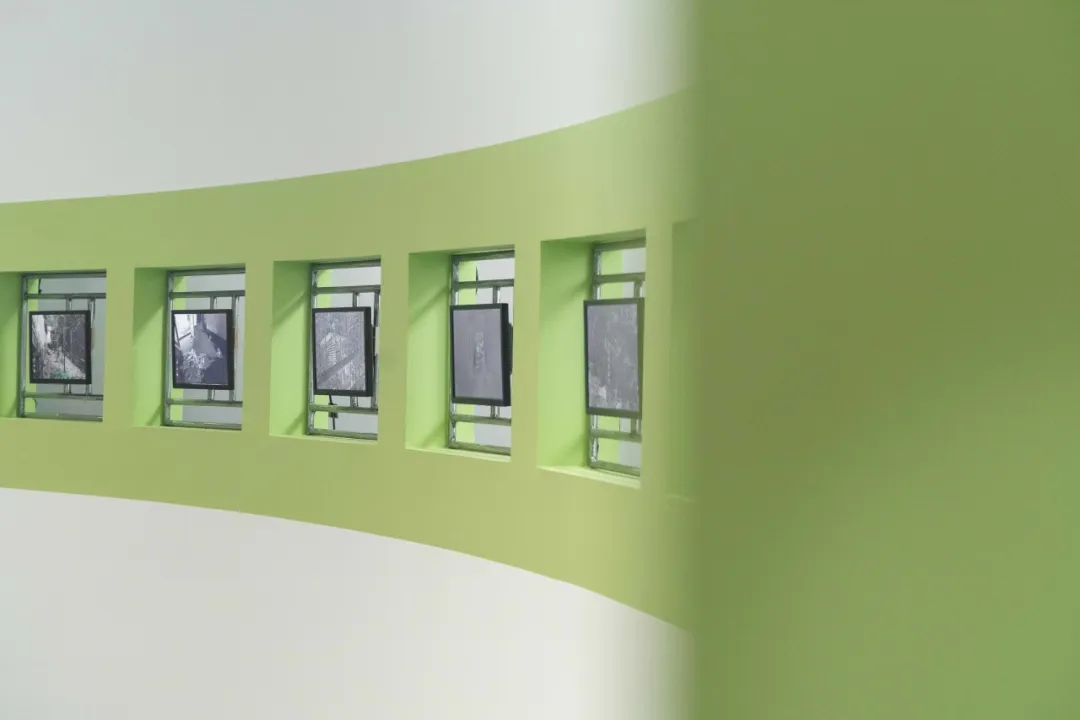
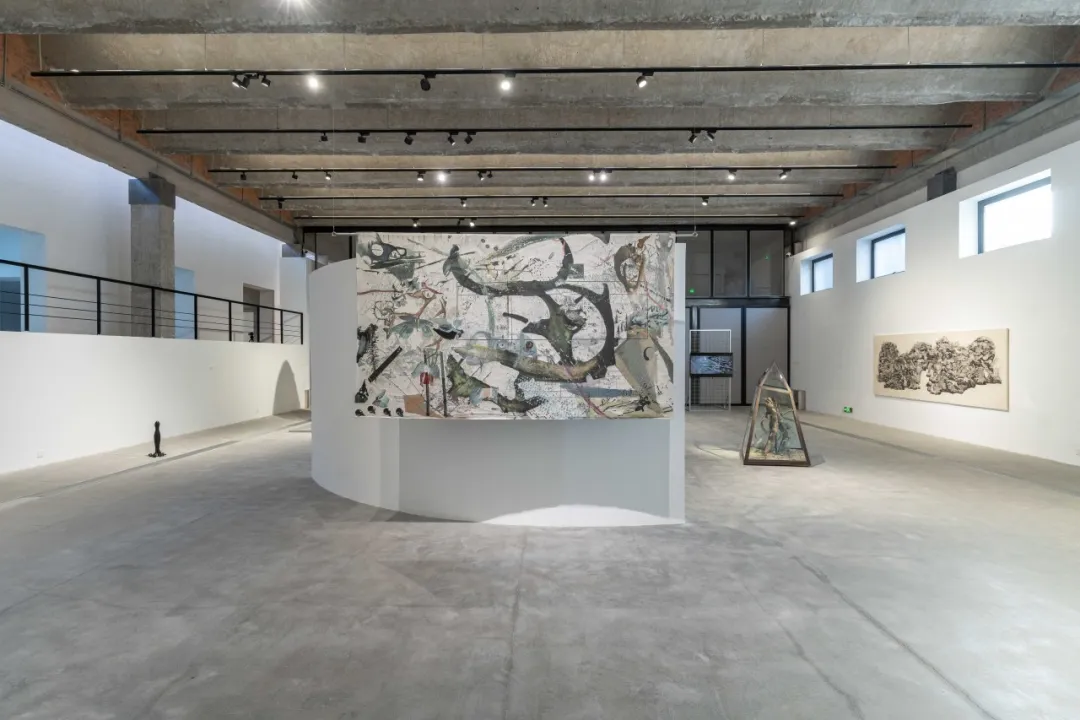
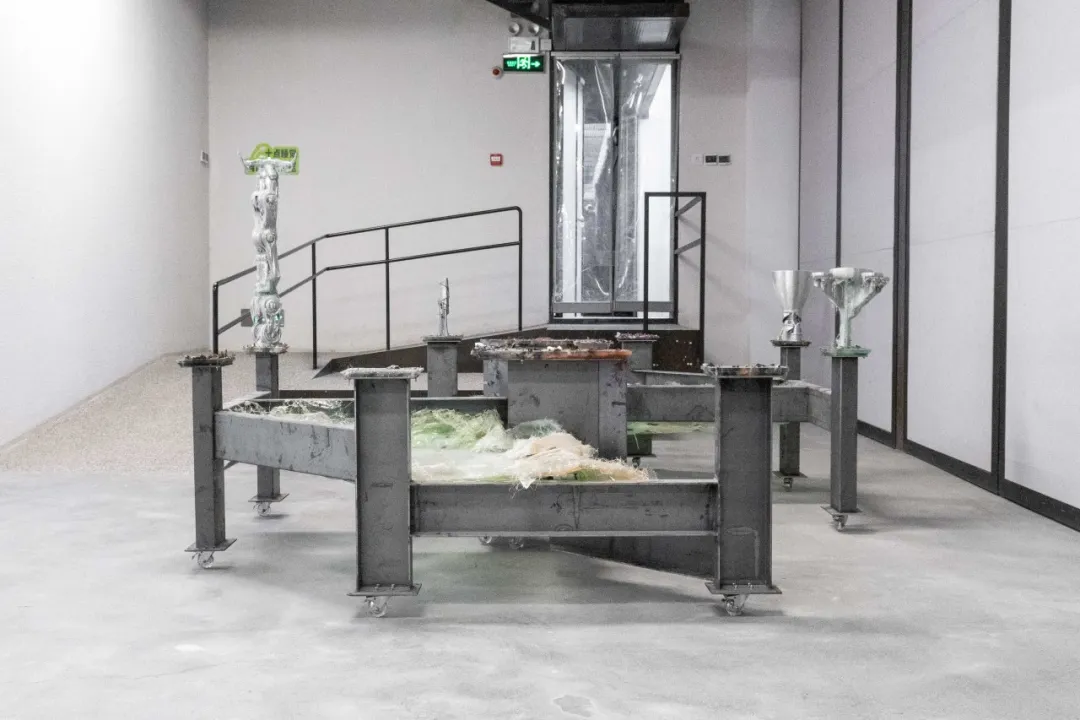 Exhibition View of Thresholds, Flaneur and Whirlpools
Exhibition View of Thresholds, Flaneur and Whirlpools
The textual work Preface to the Poem on the Peach Blossom Spring (421-2008) created by the artist Huang Yongping is undoubtedly an inspiring piece. Serving as the opening of the exhibition’s narrative, the artist depicts a “post-historical world”, which transcends the contradictions and struggles in the real world. It’s a political allegory of modernity against the backdrop of globalization after the Cold War. Another creation, Chefs (2012), resembles the world exterior to the “Peach Blossom Spring”. This work composed of more than a dozen animal head mounts is the artist’s reflection on living together in accordance with rules based on a hierarchy and division of labor. 1 As the artist stated: “The display of these animals is not part of natural history. It is neither out of love for animals and nature, nor is it to discuss humanism by opposing bestiality and humanity... Their appearance, to some extent, has somehow disrupted the order and tranquility of history and reality. These actions are closely related to the end of history as discussed by Alexandre Kojeve, which is marked by the animalization or re-animalization of humans. However, it’s not that humans continue to imitate animals, but that the ‘animals’ attempt to take the place of ‘humans’ without hesitation.” 2
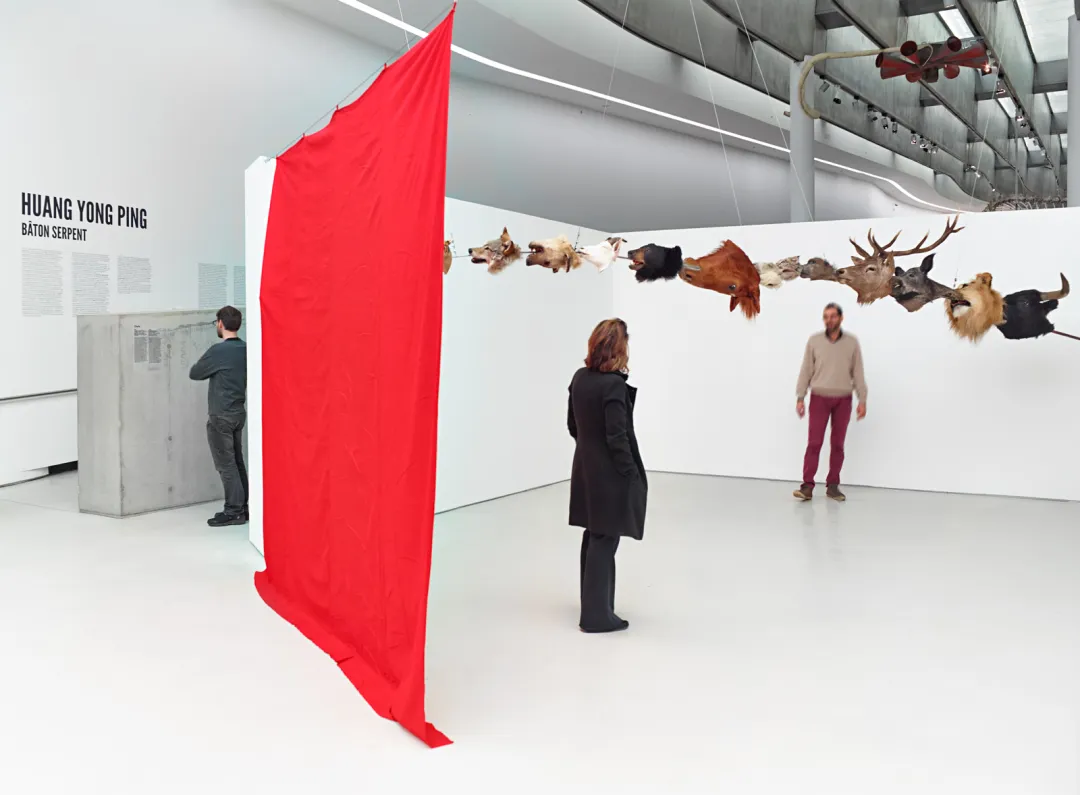
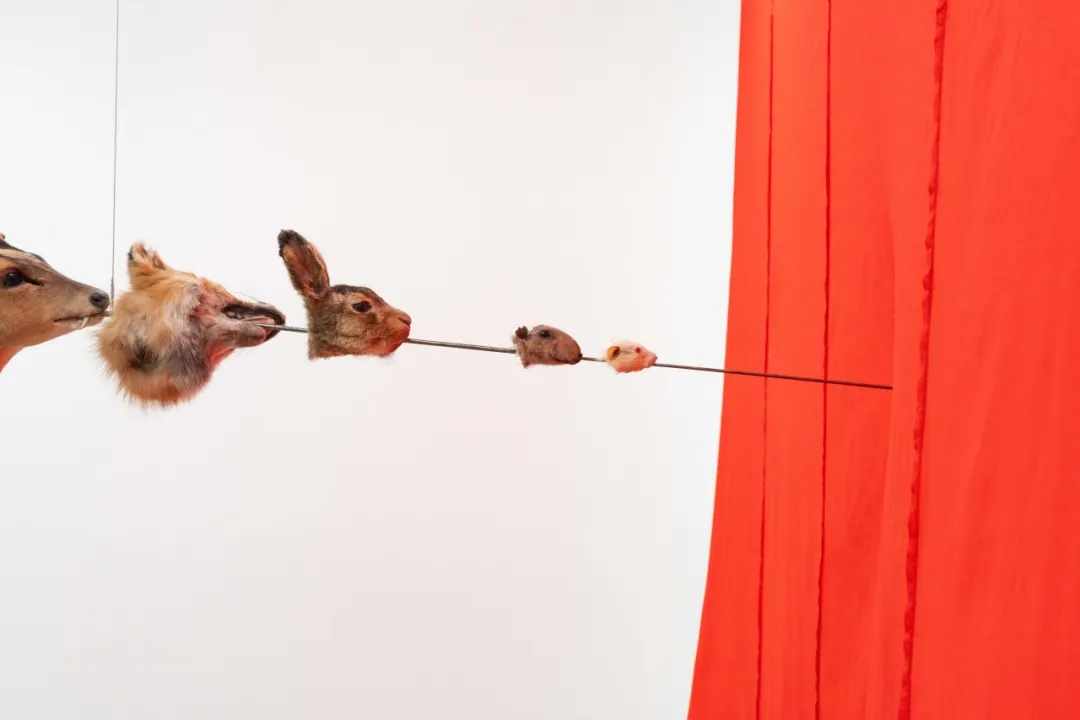
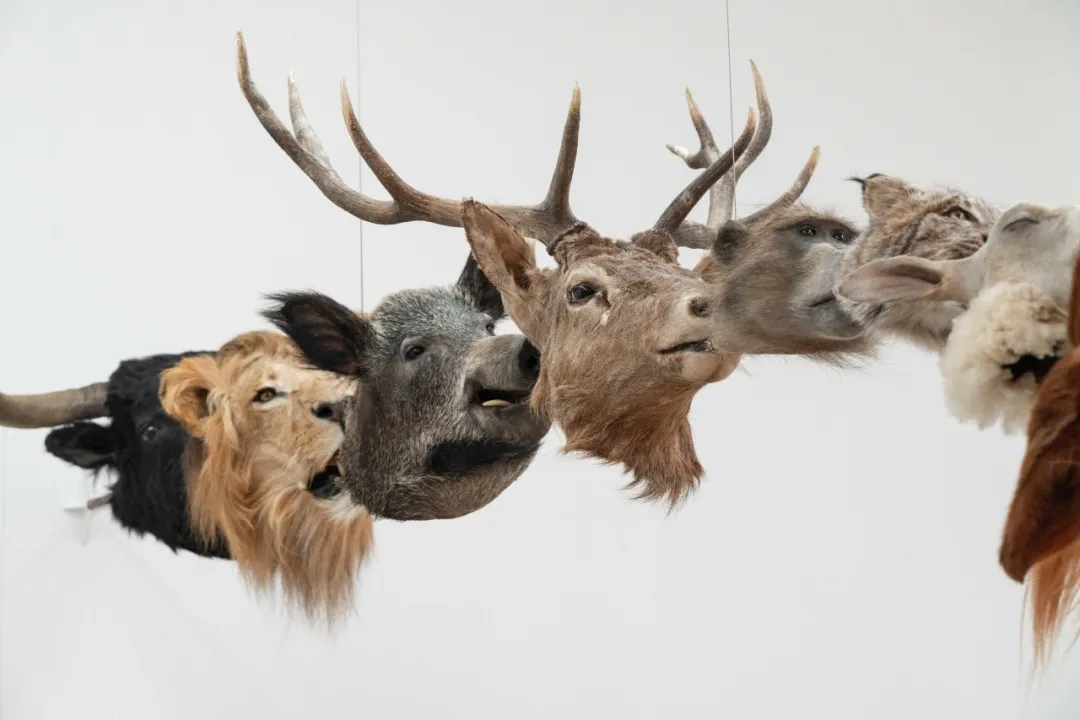 Huang Yongping, Chefs, 2012. Taxidermy, metal, cloth, Dimensions variable, ©Courtesy of Red Brick Art Museum.
Huang Yongping, Chefs, 2012. Taxidermy, metal, cloth, Dimensions variable, ©Courtesy of Red Brick Art Museum. 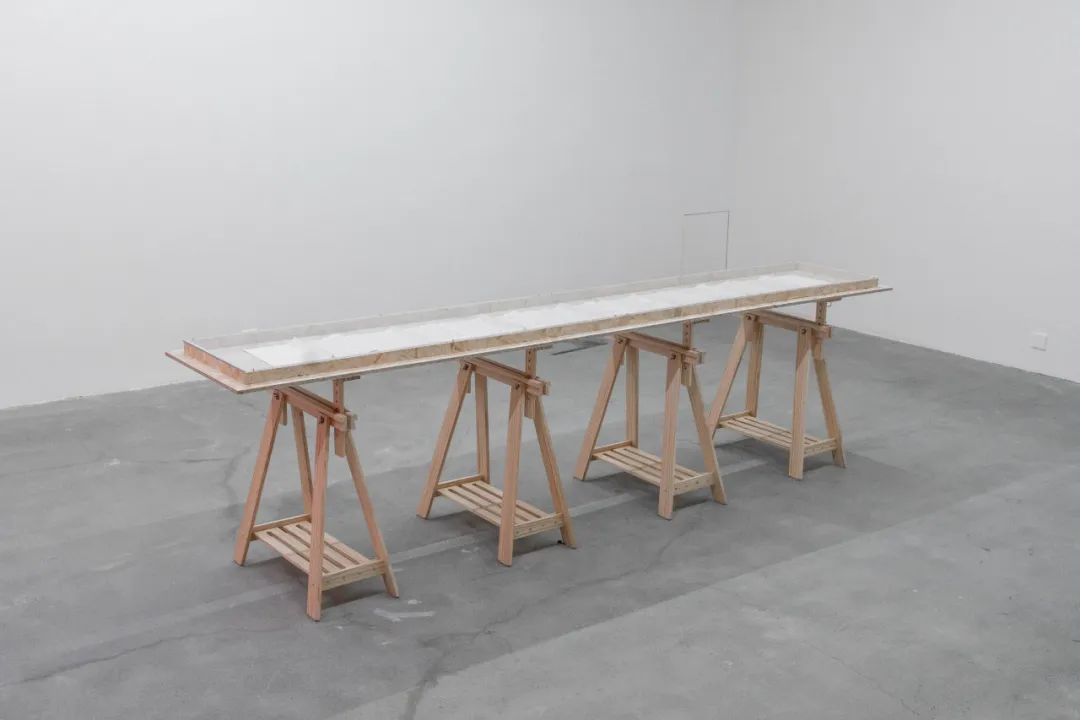
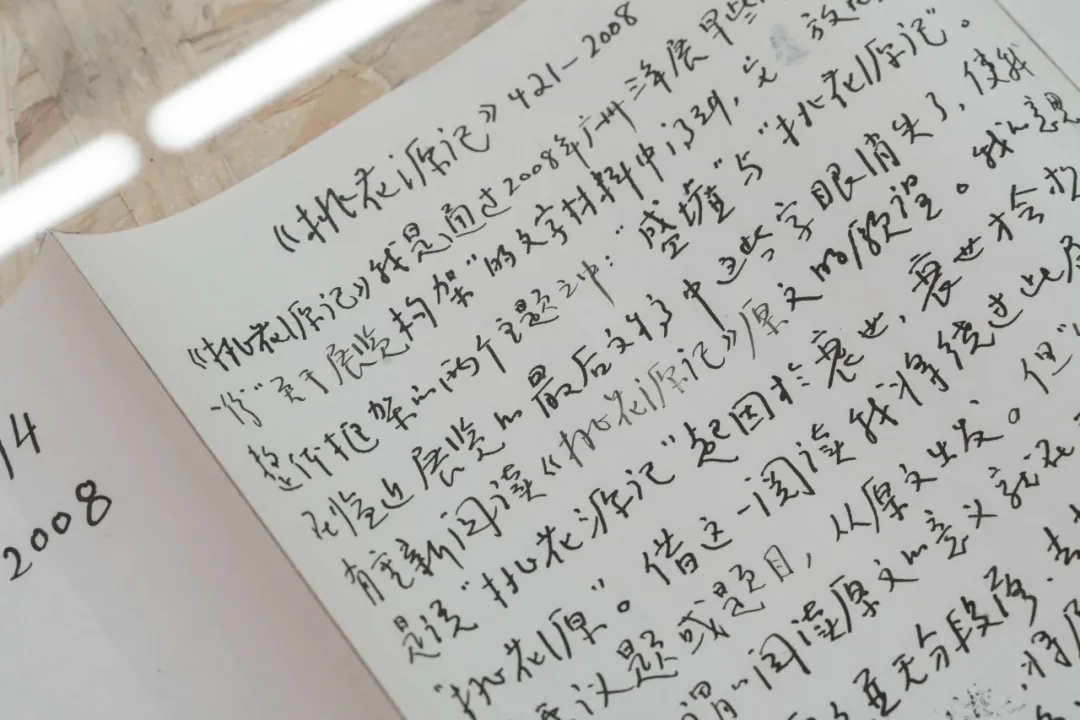 Huang Yongping, Preface to the Poem on the Peach Blossom Spring, 2008. Text writing, 294×29.7 cm. ©Courtesy of Red Brick Art Museum.
Huang Yongping, Preface to the Poem on the Peach Blossom Spring, 2008. Text writing, 294×29.7 cm. ©Courtesy of Red Brick Art Museum.
Animal bones, as a recurring symbol in the works of artist Feng Zhixuan, construct a new history while deconstructing the present through the juxtaposition and integration of non-fictional media materials from different cultures. The work Echo of the Poseidon – The Binary Epoch (2024) seems like an echo of the future. The aluminum spine of a white dolphin is embedded in a paddleboard, reminiscent of a particular scene from the movie The Day After Tomorrow: the earth undergoes drastic changes, humans disappear, and the world freezes, finally becoming a “post-human relic” monument. In the work Starwishenge (2023), the artist plays the role of a diviner. Driven by a certain randomness, he scatters copper coins from Song Dynasty and game tokens symbolizing both the ancient and the modern into a “wishing well” constructed with building steel materials. Subsequently, resin is applied to fix them in place, creating an effect similar to that of seawater. The Chinese herbal medicines, seaweeds, and shells attached to the steel surface represents the remnants abandoned by humans. This work can be regarded either as a ritual preceding a long voyage or as an imaginative projection into the distant and unknown.
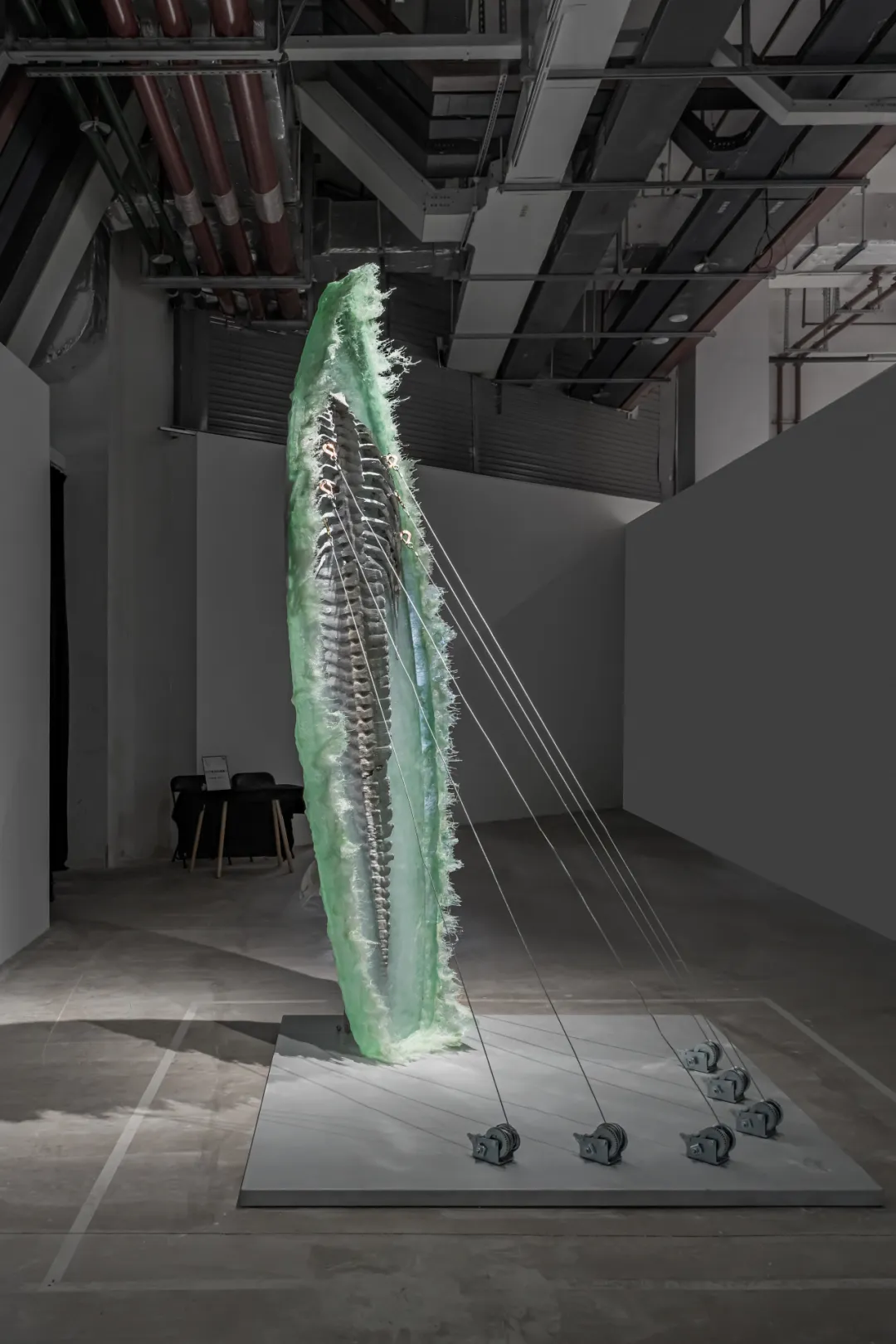
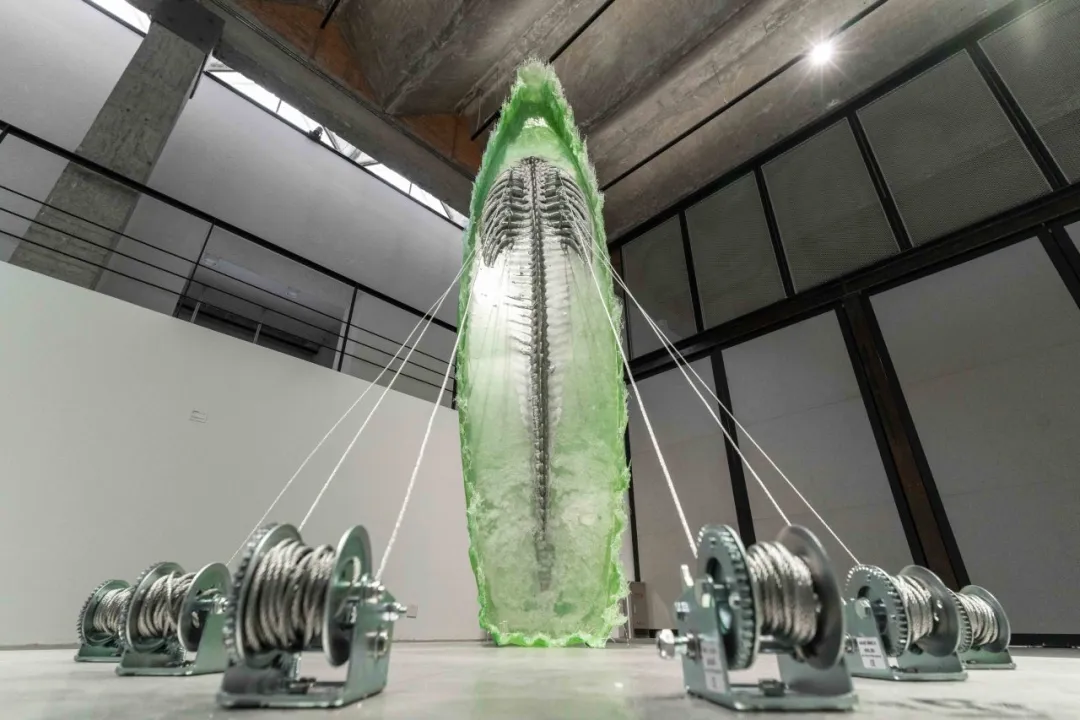 Feng Zhixuan, Echo of the Poseidon-The Binary Epoch, 2023. Aluminum, steel winch, fiberglass, 996 marine resin, epoxy resin, fiberglass, stainless steel harpoon, 200×200×350 cm. ©Courtesy of the artist and MadeIn Gallery.
Feng Zhixuan, Echo of the Poseidon-The Binary Epoch, 2023. Aluminum, steel winch, fiberglass, 996 marine resin, epoxy resin, fiberglass, stainless steel harpoon, 200×200×350 cm. ©Courtesy of the artist and MadeIn Gallery.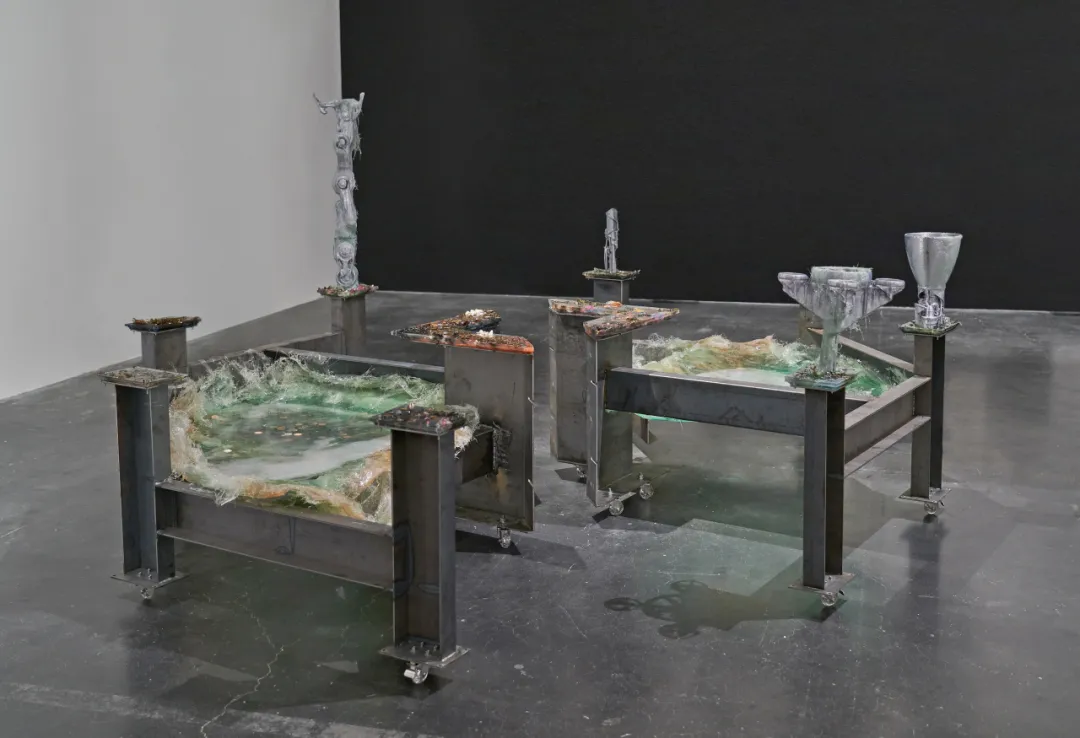
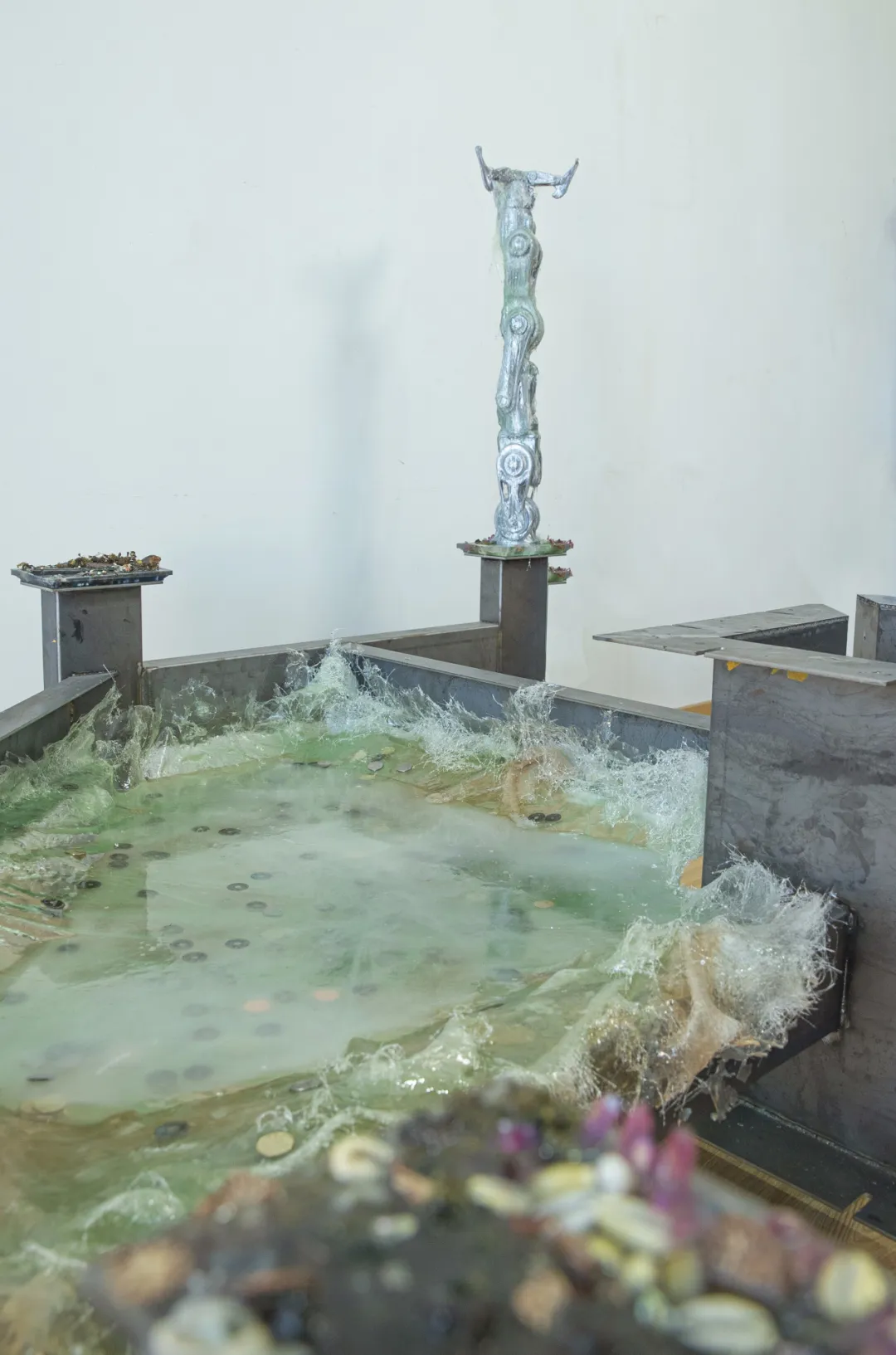 Feng Zhixuan, Starwishenge, 2023. Aluminum, steel, stainless steel, resin, fiberglass, copper coins, game tokens, Chinese medicine, seaweed, shells, crystal, Dimensions variable. ©Courtesy of the artist and MadeIn Gallery.
Feng Zhixuan, Starwishenge, 2023. Aluminum, steel, stainless steel, resin, fiberglass, copper coins, game tokens, Chinese medicine, seaweed, shells, crystal, Dimensions variable. ©Courtesy of the artist and MadeIn Gallery.
For Dong Jinling, who was born in Lianyungang, the “sea” is not only a part of the nature but also a symbol of power. Childhood serves as a reference for the artist’s self-identity, consciousness, actions, and the external world, forming a contrast between fluidity and inclusiveness on one hand and the fixity and exclusivity of power on the other. As the artist articulated: “This work is more like two egos, with almost the same shape and color, possessing the dual characteristics of male and female. When the ‘I’ look down at the ‘i’, it appears feeble, while the ‘i’ look up at the ‘I’, it appears solemn. It also presents the internal perspectives of the ‘observer’ and the ‘observed’. The body of the black sculptures, engraved with countless knife marks, is just like my physical body, an interpretation of scars.” 3Moreover, the work The Sea (2024), as the heaviest piece in this exhibition, cannot escape the lightness of life either.
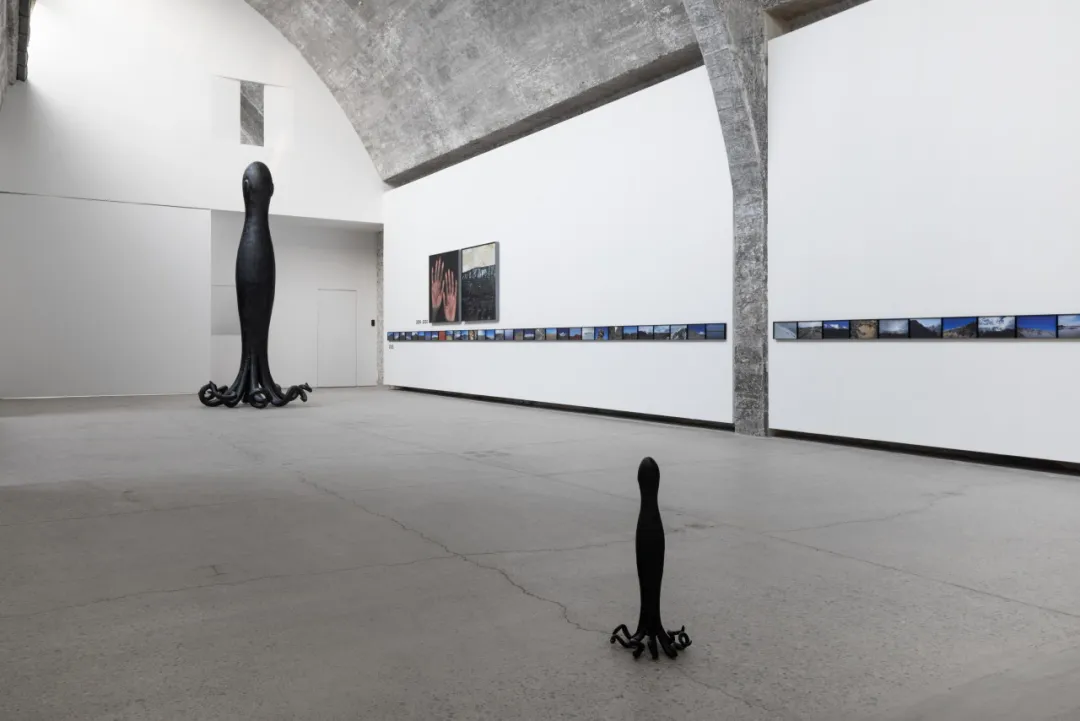
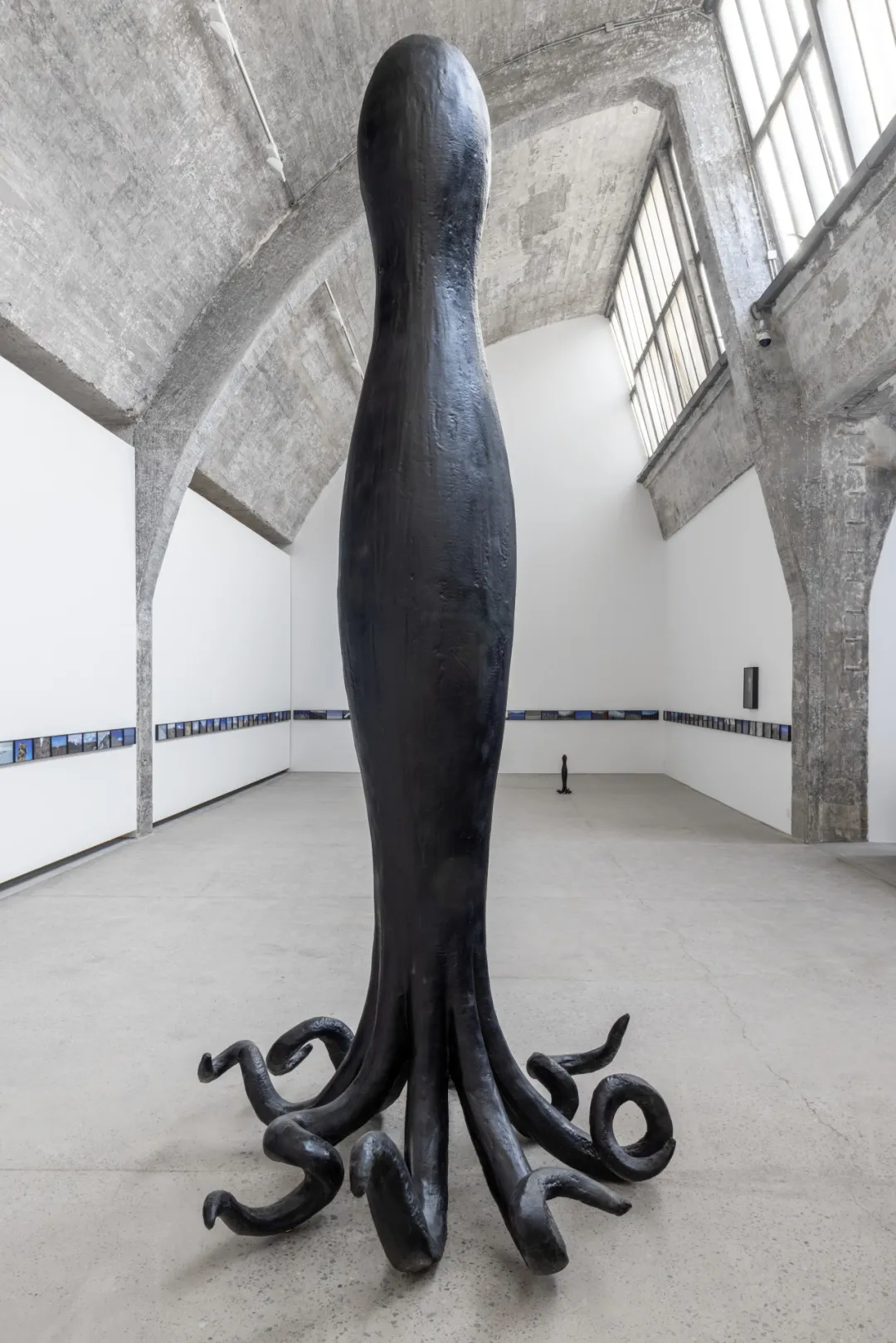 Dong Jinling, The Sea, 2024. Cast iron, 370×169.6×158.4 cm & 60×25.6×25.7 cm. ©Dong Jinling, Courtesy of REFLEXION Gallery.
Dong Jinling, The Sea, 2024. Cast iron, 370×169.6×158.4 cm & 60×25.6×25.7 cm. ©Dong Jinling, Courtesy of REFLEXION Gallery.
The encounters arising from wandering are both random and inevitable. The works of Daido Moriyama are renowned for being “grainy/rough, blurry, and out-of-focus”. As a roving recorder of the streets, he perceives photography as an instinctive state and presents it objectively in a decentralized visual language, while also faintly marking the real present of his own nation. As an imagined community, animals have recurrently materialized in the artist’s creations, being both the subject and the other. For example, in the work Paris 88/89 (1989), the simulated inflatable whales floating in the air nearly obscure the sky, randomly generating a sense of familiar strangeness. Given that whaling is part of Japanese culture, will the artist have any associations and feelings? At this time, the whale has also become a symbol with hybrid cultural backgrounds.
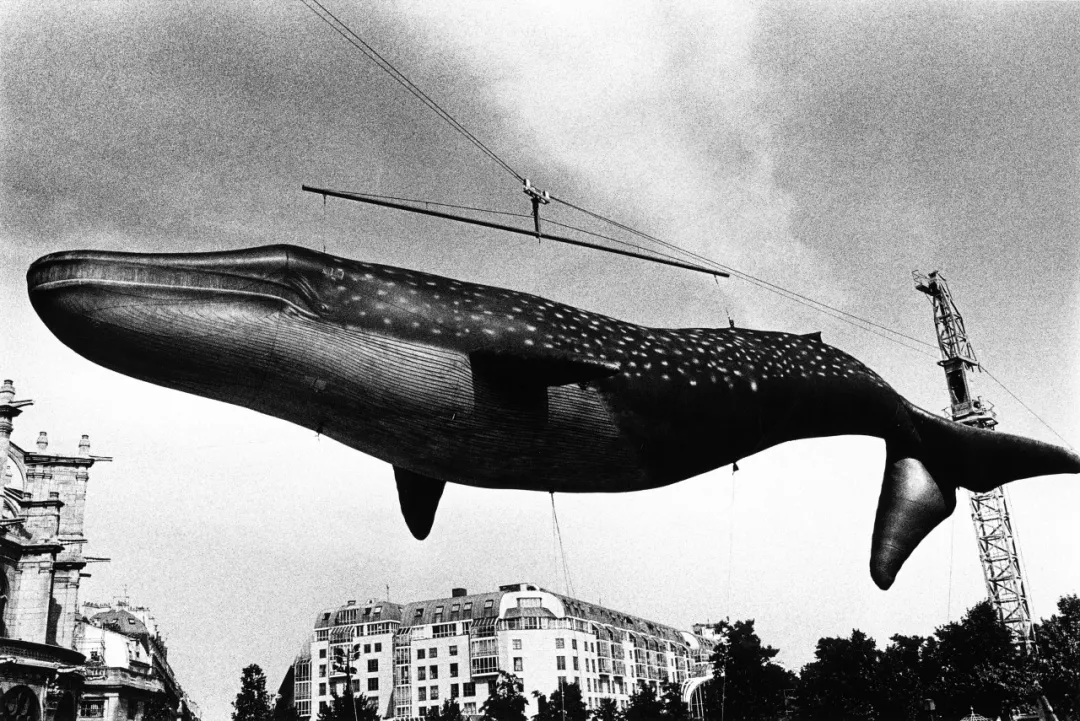
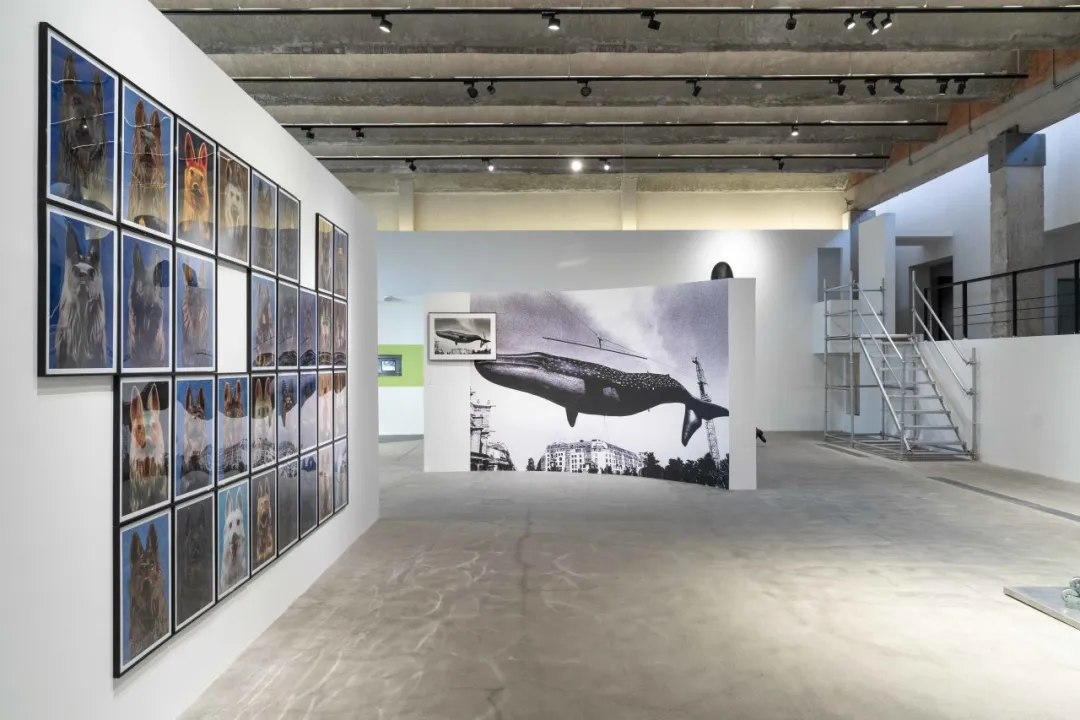 Daido Moriyama, Paris 88/89, 1989. Gelatin silver print, 60×90 cm. ©Courtesy of Daido Moriyama Photo Foundation and Three Shadows +3 Gallery.
Daido Moriyama, Paris 88/89, 1989. Gelatin silver print, 60×90 cm. ©Courtesy of Daido Moriyama Photo Foundation and Three Shadows +3 Gallery.
Animals, as annotations of human history, bear multiple historical narratives. Their lives and bodies have also become the objects shaped by power. Since 2012, Wu Chuan-Lun has begun to amass a large number of shepherd-dog shaped coin banks, which were often used as prizes for ring-toss games in Taiwan. He has conducted research on the genealogy of German shepherd dogs as well as their manifestations and images’ evolution in different historical time, spaces, and cultures4. As part of the artist’s solo exhibition project No Country for Canine (2019), Portraits (from No Country for Canine) (2018) delves beyond the mere rewriting of animal images in its exploration of biopolitics. However, it penetrates into the power relations and political connections between humans and animals. Simultaneously, it reflects on the role transformation of animals within the geopolitical context and thereby links the specific historical circumstances of German, Japan, and Taiwan, China.
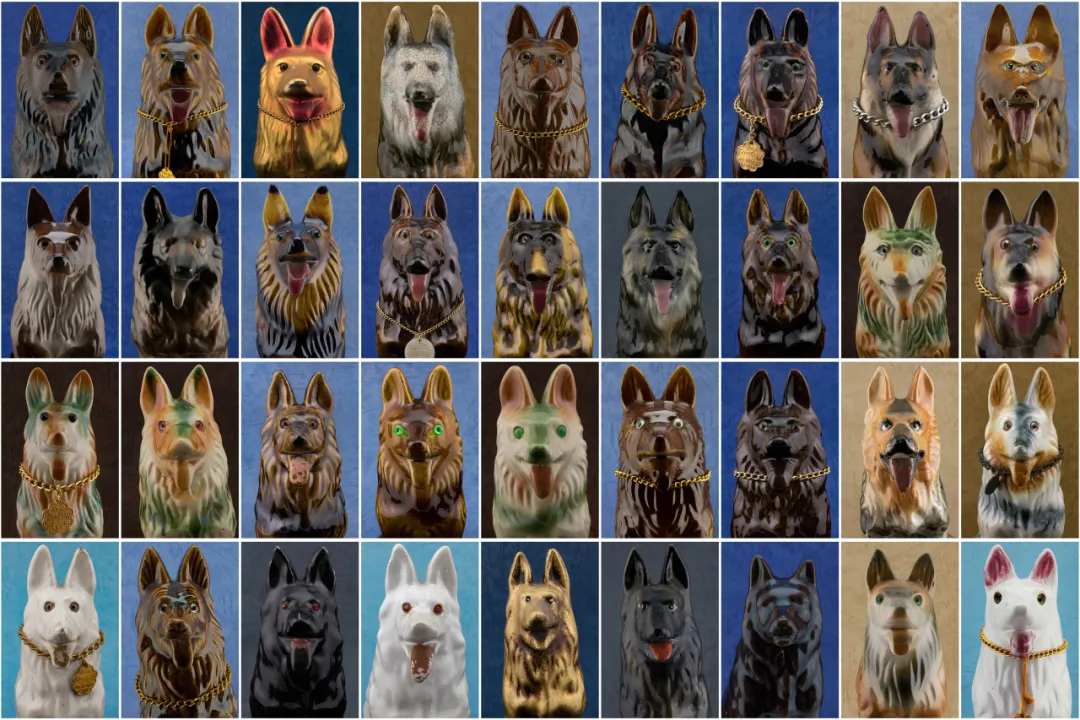
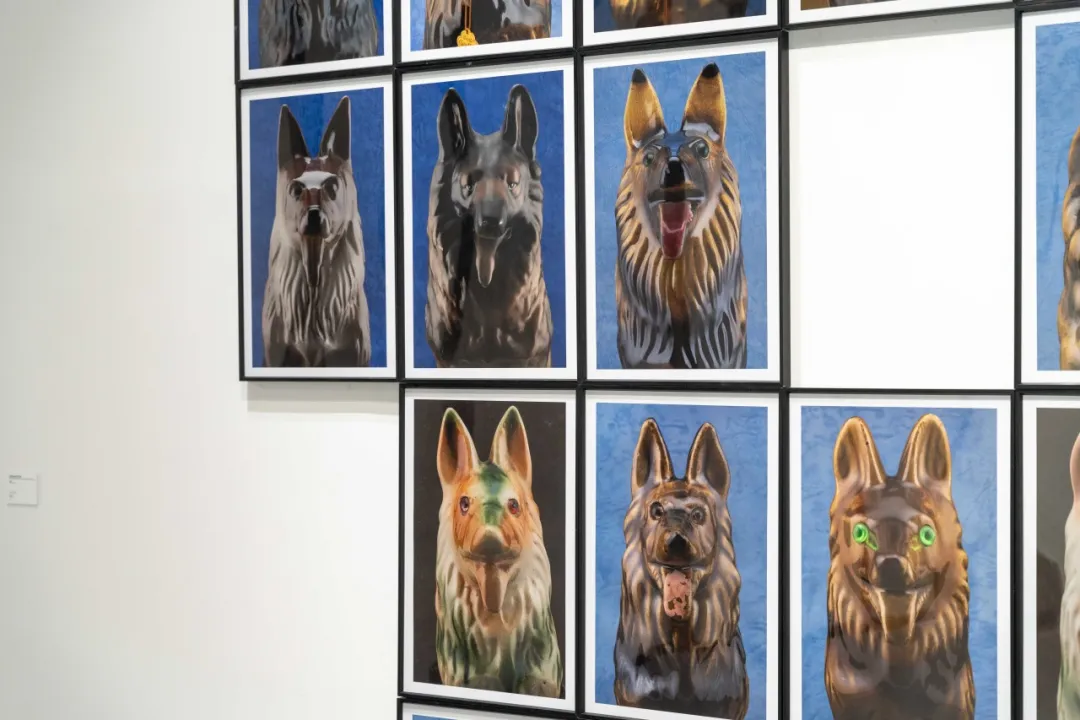 Wu Chuan-Lun, Portrait (from No Country for Canine), 2018. Inkjet print, 59.4×42cm, 36 pieces, ©Courtesy of Wu Chuan-Lun.
Wu Chuan-Lun, Portrait (from No Country for Canine), 2018. Inkjet print, 59.4×42cm, 36 pieces, ©Courtesy of Wu Chuan-Lun.
Myth, as a supposition transcending geopolitical and spatiotemporal boundaries, offers a pivot connecting the illusory realm and reality. In The Mountain Where Trapping the Dragon (2014) of the artist Wu Jian’an, the meticulously creative approach reflects his profound perception of the real world. The incomplete “mounts” render the ancient, the present, and the future a certain kind of prophecy, providing viewers with a mysterious form of communion that transcends everyday reality. The “flood”, accompanied by destruction and rebirth, makes “managing the water” not only a modern translation of traditional Chinese myths but also a methodology for comprehending and experiencing the complex relationships between the tradition and the modernity, the local and the global. Furthermore, it’s a deliberation on contemporary cultural identities and historical memories.
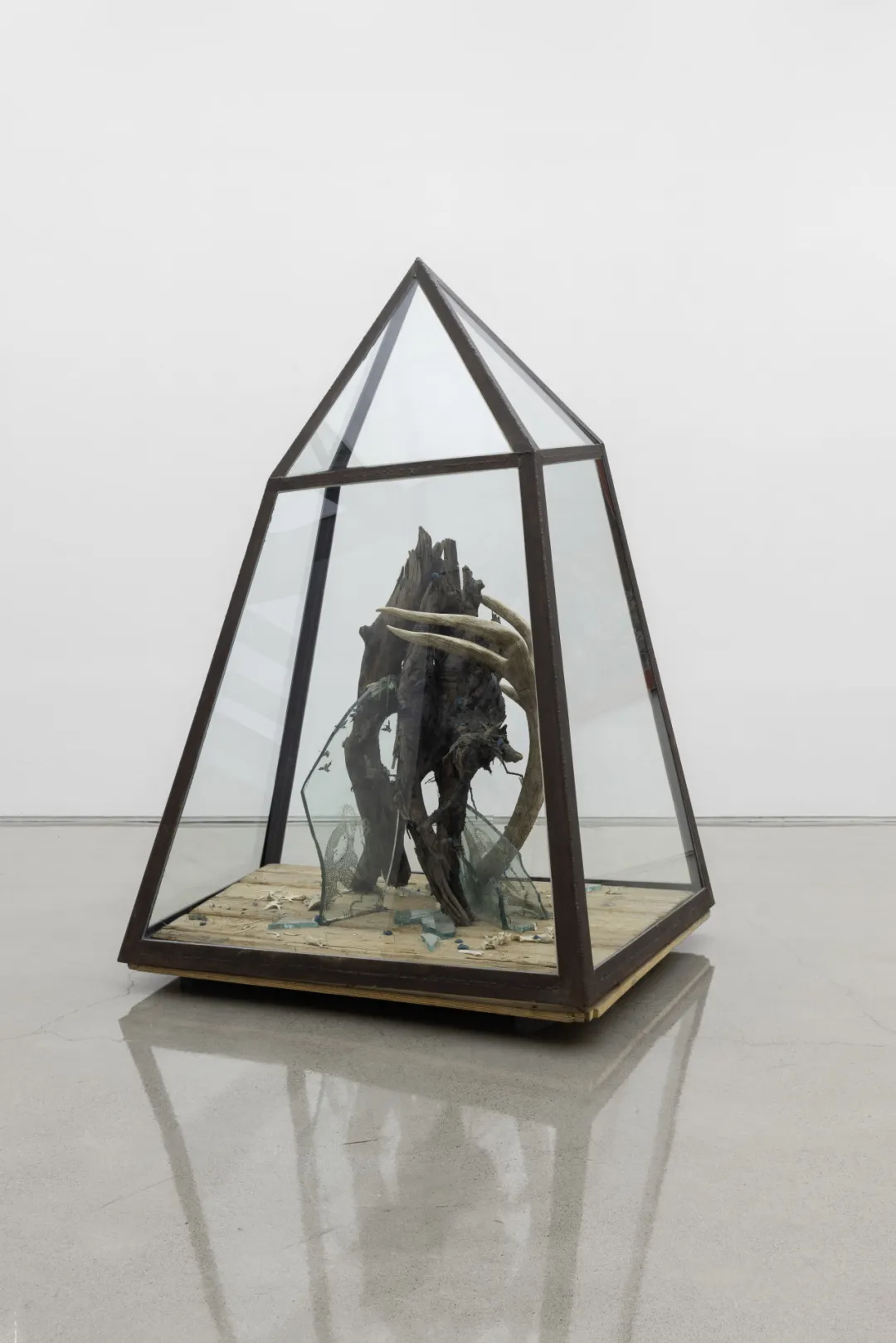
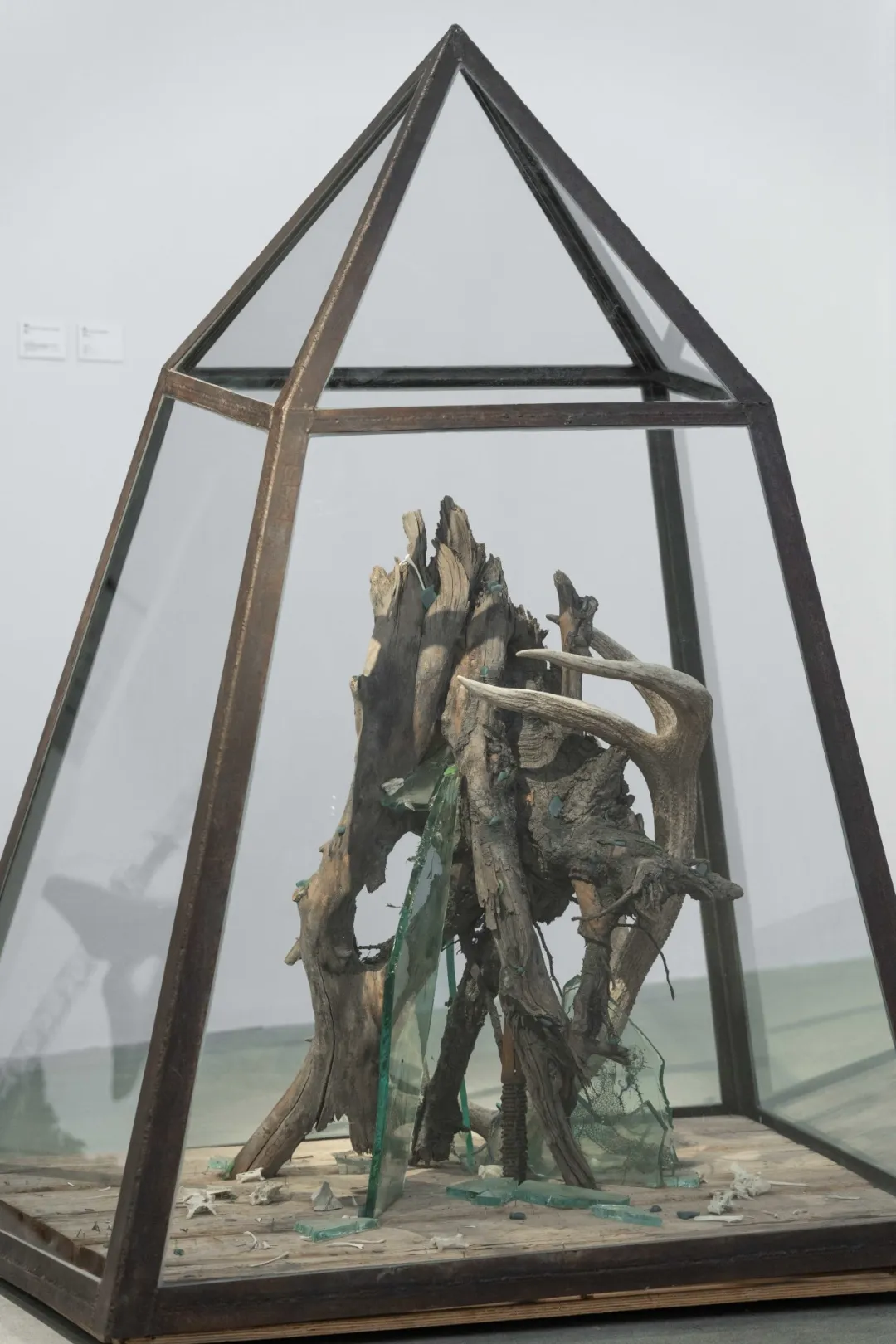 Wu Jian'an, The Mountain Where Trapping the Dragon, 2014. Dead tree root, wax, antlers, broken glass, bones of birds, sketching stencils which are colored by pencil, board, steel, glass, etc., 250×140×180 cm. ©Courtesy of Hanmo S Gallery.
Wu Jian'an, The Mountain Where Trapping the Dragon, 2014. Dead tree root, wax, antlers, broken glass, bones of birds, sketching stencils which are colored by pencil, board, steel, glass, etc., 250×140×180 cm. ©Courtesy of Hanmo S Gallery.
Northeast China serves as the origin of the geographical thread in this exhibition. The artist Zhang Wenzhi, hailing from Dalian, inspired by Tienshihchai Pictorial and his frequent visits to the Dalian Natural History Museum, employs a text-writing-like approach. He artfully juxtaposed the collected authentic historical materials, folk legends, and myths within the pictorial plane and utilized ink as a medium, endowing the works with a tint of Chinese fantasticality. Dalian, a city suffered from two major wars in Chinese modern history, bears a profound geopolitical imprint that represents the relationships among the individual and the locality, nature and humanity, as well as the colonialism and post-colonialism. The work The Northern Hills (2022) stands as a comprehensive and an excellent response to the aforesaid. In Uszuye (2021), the artist follows in the footsteps of Fu Jiangsheng, travelling across the terrains of Northeast China. The deer, as a symbol of divinity, carries the essence of shamanism. The drumbeat, while evoking spiritual presences, also arouses the numerous historical bygones of Northeast China.
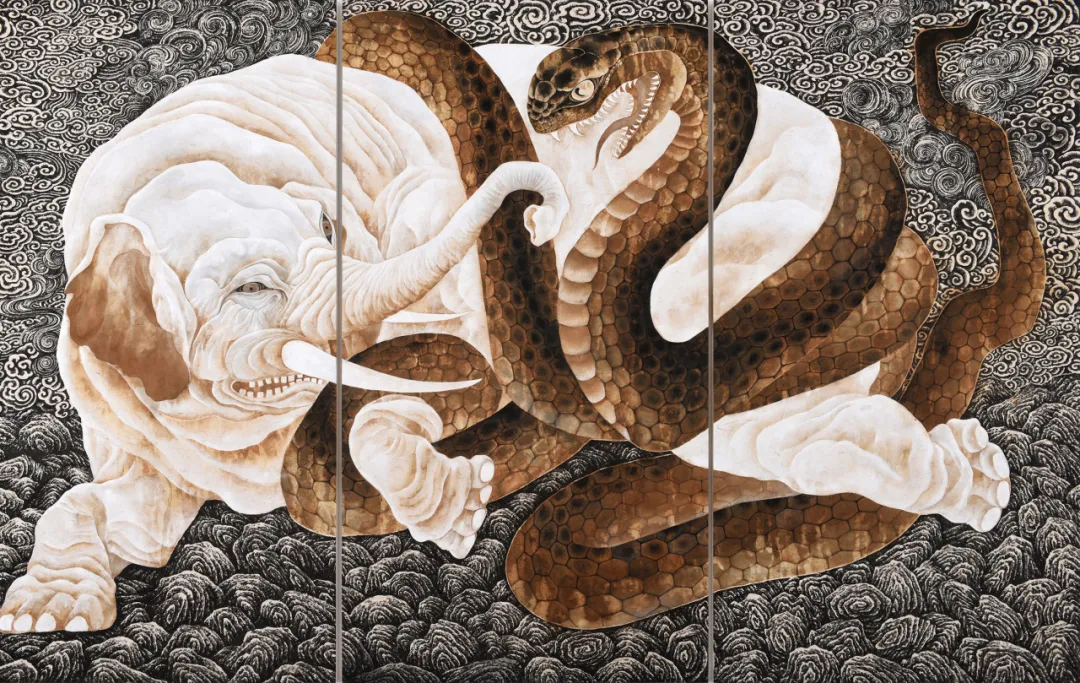 Zhang Wenzhi, Snake Swallows Elephant, 2022. Ink and color on rice paper, 179.5×96cm×3. ©Courtesy of the artist and ART LABOR Gallery.
Zhang Wenzhi, Snake Swallows Elephant, 2022. Ink and color on rice paper, 179.5×96cm×3. ©Courtesy of the artist and ART LABOR Gallery.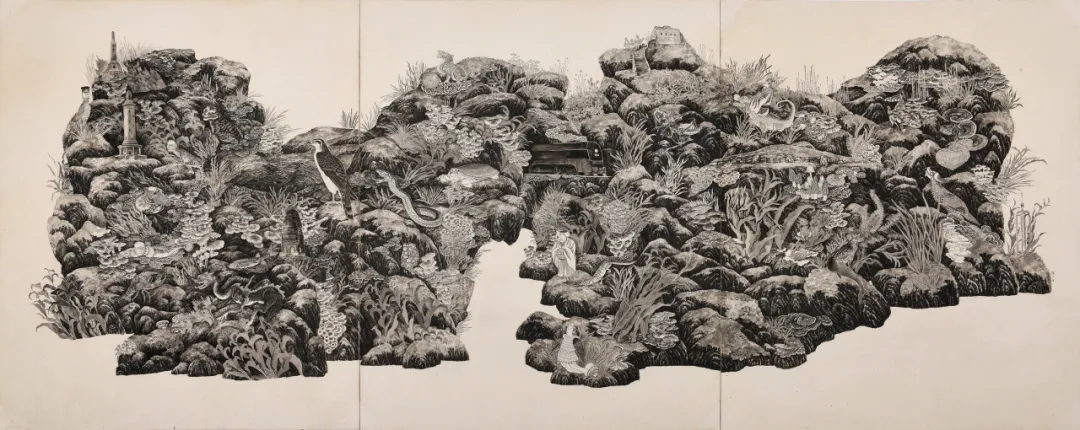 Zhang Wenzhi, The Northern Hills, 2022. Ink on rice paper, 140×117cm×3. ©Courtesy of the artist and ART LABOR Gallery.
Zhang Wenzhi, The Northern Hills, 2022. Ink on rice paper, 140×117cm×3. ©Courtesy of the artist and ART LABOR Gallery.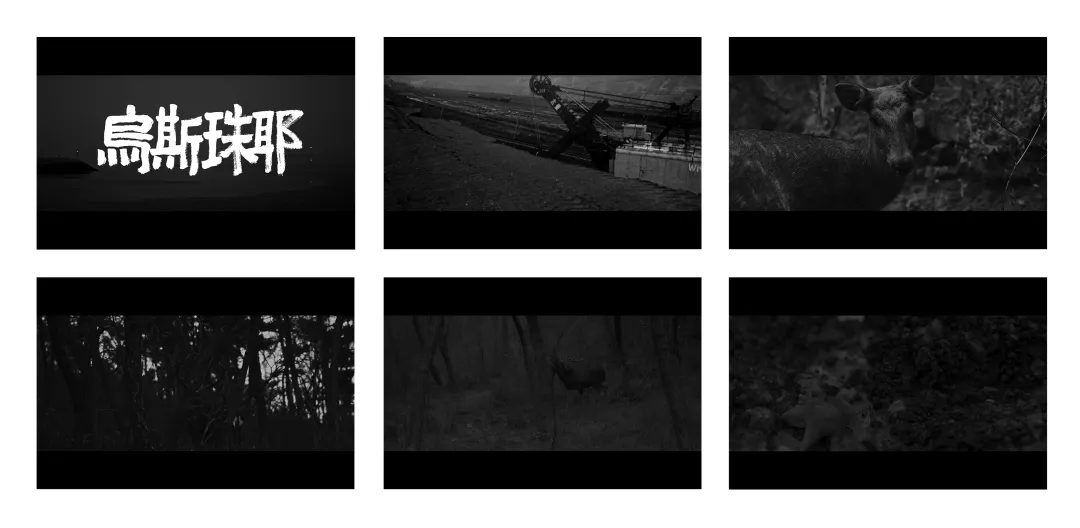 Zhang Wenzhi, Uszuye, 2021. Single screen video, 12'55''. ©Courtesy of the artist and ART LABOR Gallery.
Zhang Wenzhi, Uszuye, 2021. Single screen video, 12'55''. ©Courtesy of the artist and ART LABOR Gallery.
The Singaporean artist Zhao Renhui has long been concerned with the relation between humans and nature. In the works The Lines We Draw II (Towards North Korea) (2019) and The Lines We Draw III (Towards Alaska) (2019), the artist journeyed to Dandong and collaborated with local researchers to conduct a documentation centered around the migrations of godwits and great knots on the Yalu River. The flocks of birds presented in the works are not directly photographed by the artist but are synthetically created subjectively from numerous individual bird photos. They generate a sense of surreality between intentional fictionalization and research-based authenticity. By photographing the lines drawn by birds in the sky, Zhao Renhui likens them to a part of the system established by humans to understand animals, namely the lines drawn for organization, classification, and control. 5
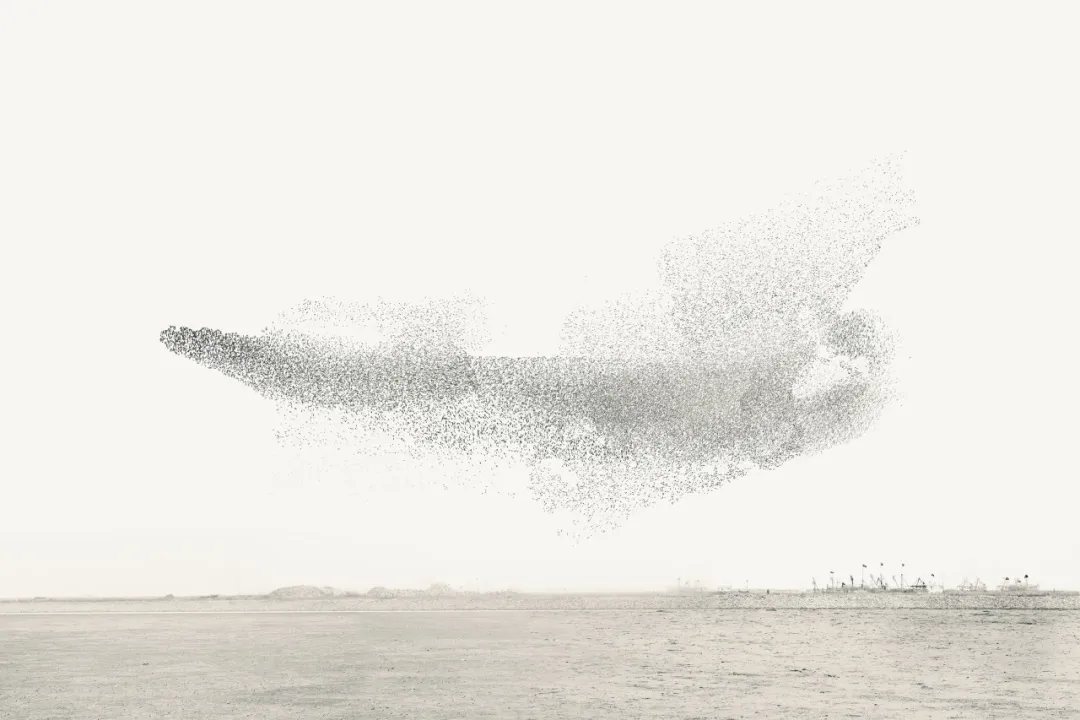 Zhao Renhui, The Lines We Draw II (Towards North Korea), 2019. UV printed lightbox, 100×150×12 cm. ©Courtesy of the artist and ShanghART Gallery.
Zhao Renhui, The Lines We Draw II (Towards North Korea), 2019. UV printed lightbox, 100×150×12 cm. ©Courtesy of the artist and ShanghART Gallery.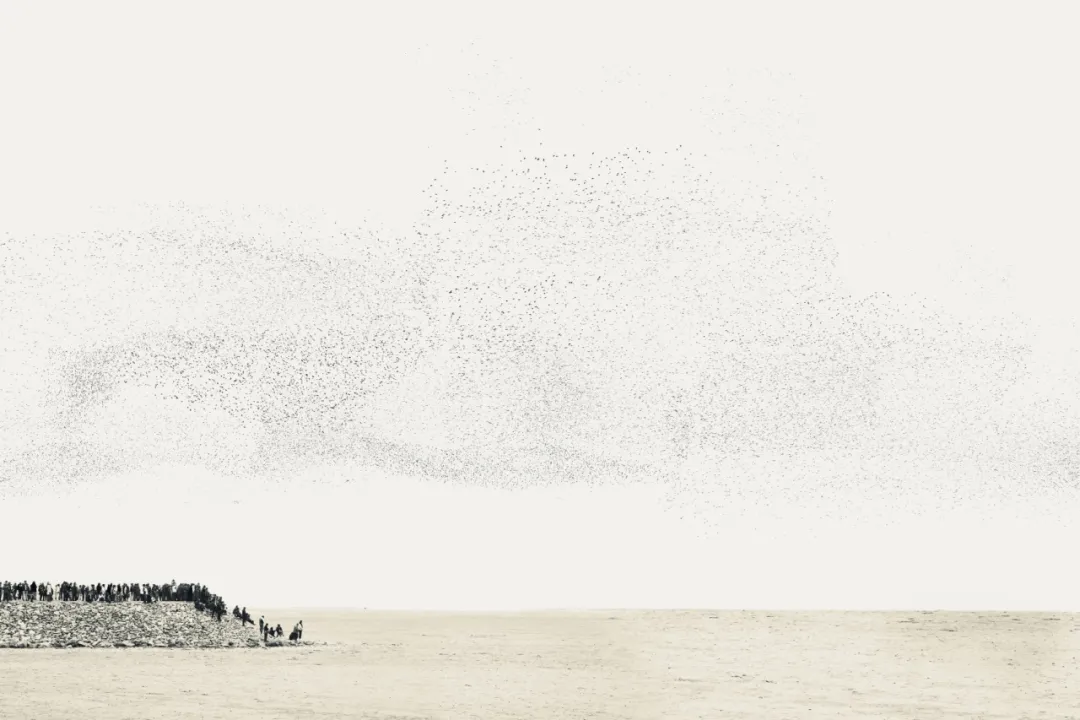 Zhao Renhui, The Lines We Draw III (Towards Alaska), 2019. UV printed lightbox, 100 (H) ×150×12 cm. ©Courtesy of the artist and ShanghART Gallery.
Zhao Renhui, The Lines We Draw III (Towards Alaska), 2019. UV printed lightbox, 100 (H) ×150×12 cm. ©Courtesy of the artist and ShanghART Gallery.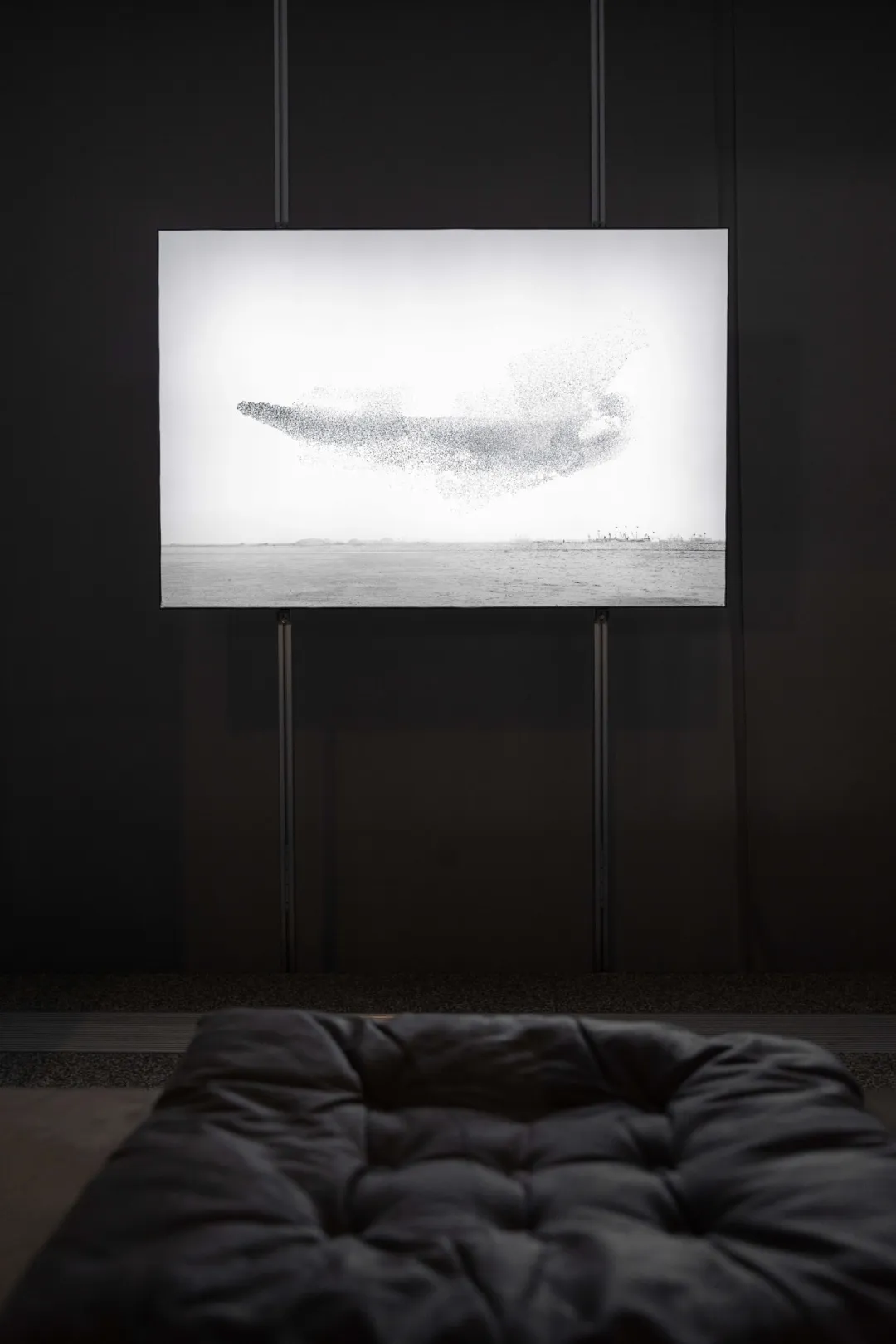 Exhibition View
Exhibition View
A zoo, as a special geographical environment, embodies complex connotations in its very existence. It is not only a product of human culture but also a manifestation of humanity’s division and control over the nature. Stemming from the artist Tong Yixin’s childhood memories, Poems in the Mount Lu Zoo (2015 - 2020) is documented in video form the transformations in Mount Lu Zoo from 2015 to 2020, witnessing how man-made things were first devoured by nature and subsequently remodeled by humans into a habitable state. While constructing the boundary between civilization and wilderness in a poetic way, it mirrors humanity’s limited cognition of nature and the desire for dominion. From a geopolitical perspective, this desire for control can be regarded as a ceaseless scramble and manipulation for territory and resources.
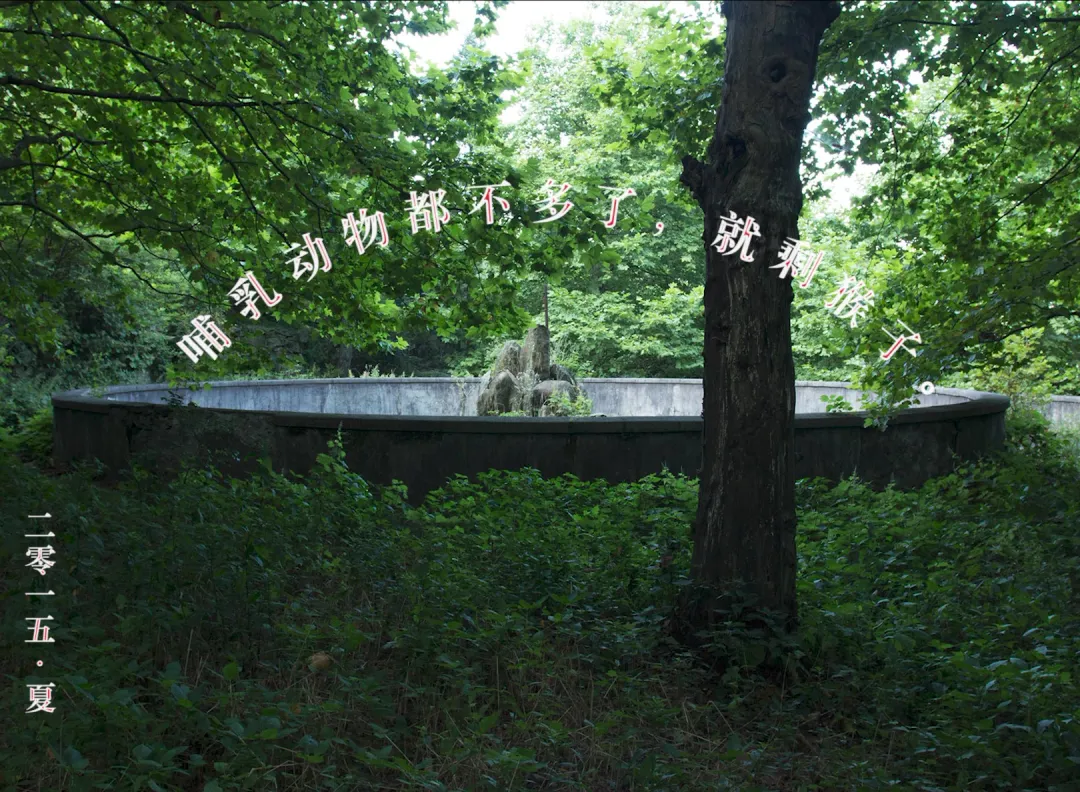
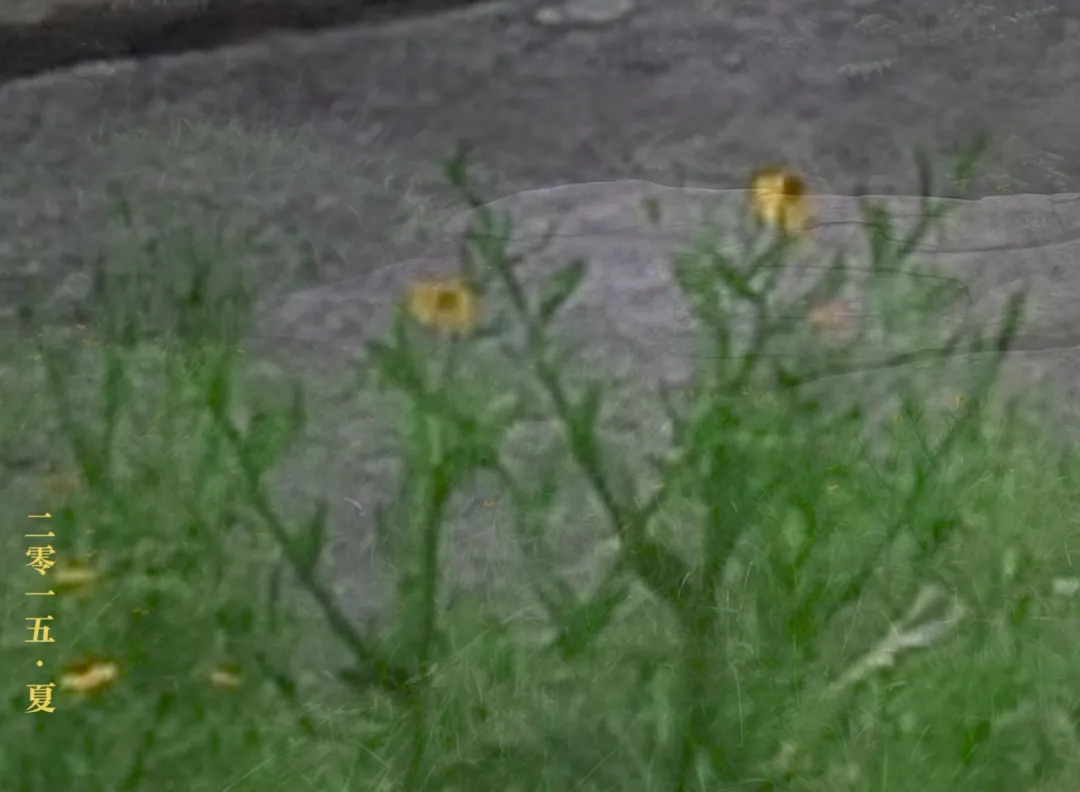
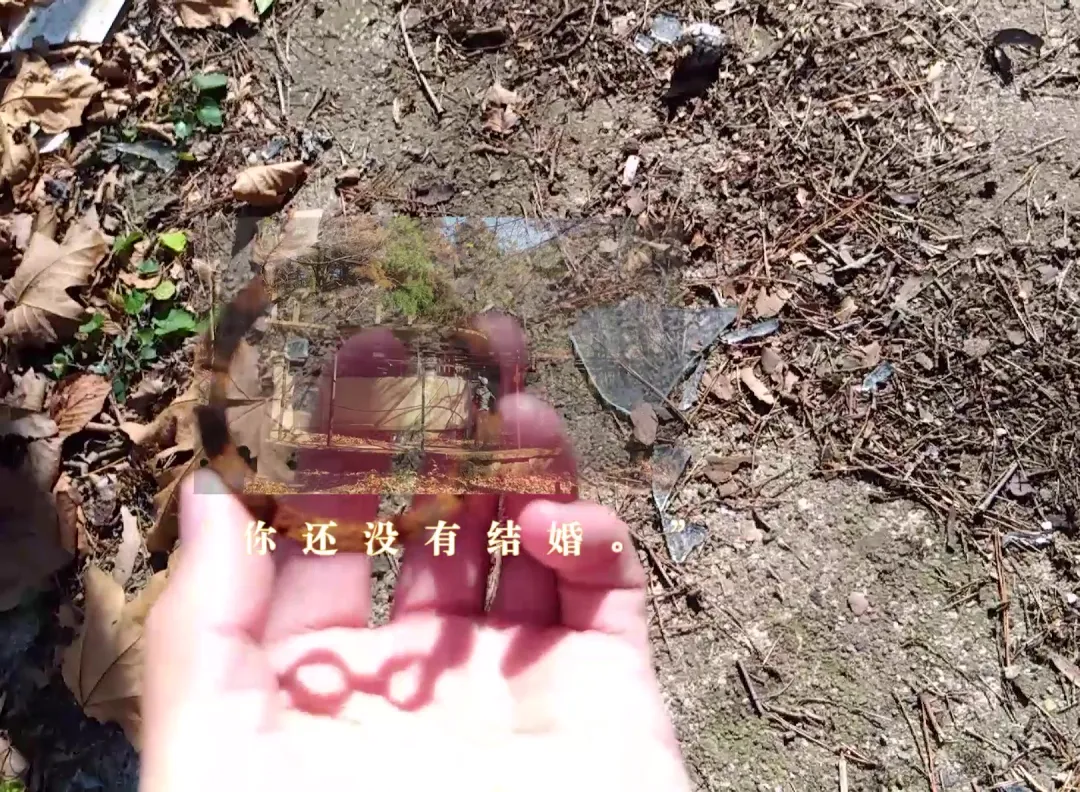 Tong Yixin, Poems in the Mount Lu Zoo, 2015-2020. Ten-channel HD video installation, Dimensions variable. ©Courtesy of the artist and Vanguard Gallery.
Tong Yixin, Poems in the Mount Lu Zoo, 2015-2020. Ten-channel HD video installation, Dimensions variable. ©Courtesy of the artist and Vanguard Gallery.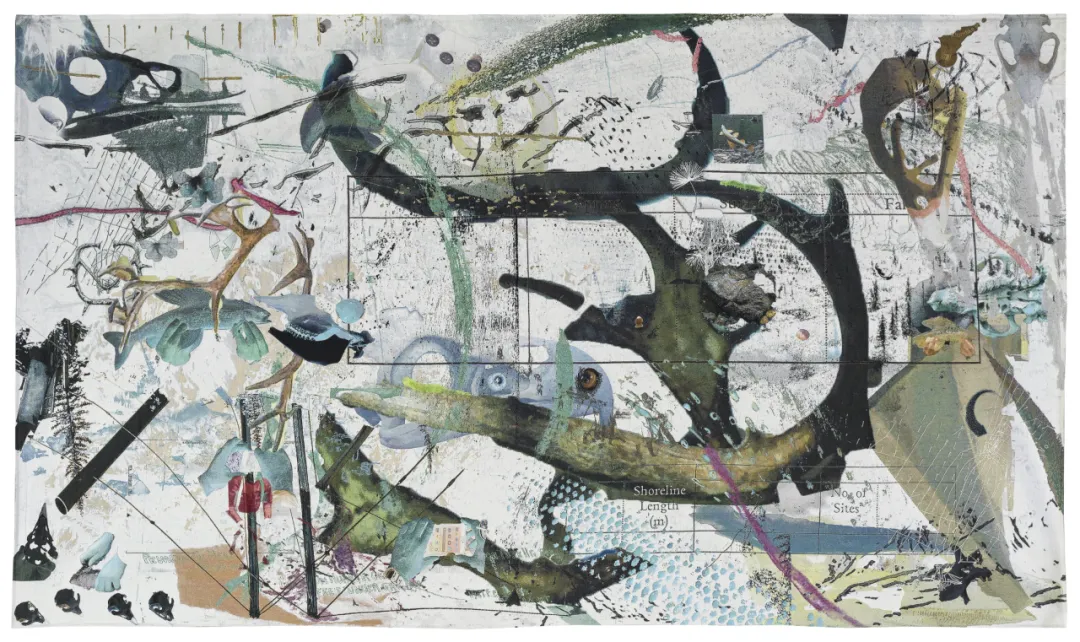 Tong Yixin, Animalistic Punk-Bones, 2019. Jacquard tapestry, galvanized metal tube, steel eye bolts, 160×284 cm. ©Courtesy of the artist and Vanguard Gallery.
Tong Yixin, Animalistic Punk-Bones, 2019. Jacquard tapestry, galvanized metal tube, steel eye bolts, 160×284 cm. ©Courtesy of the artist and Vanguard Gallery.
In the works of artist Zhu Changquan, within the framework of disembodiment in the post-human era, non-human species are accorded an equivalent status to that of humanity. This creative concept profoundly embodies the artist’s challenge to geopolitics and anthropocentrism. In his works I’m the Visitor (2021) and I'm Disguised, Right in front of You (2021), Zhu Changquan has opted for primate monkeys as a metaphorical device. These images not only laden with consciousness but also flattened in the conceptual “Third Space”, making the trivial details often overlooked due to cognitive inertia the key to decoding things.
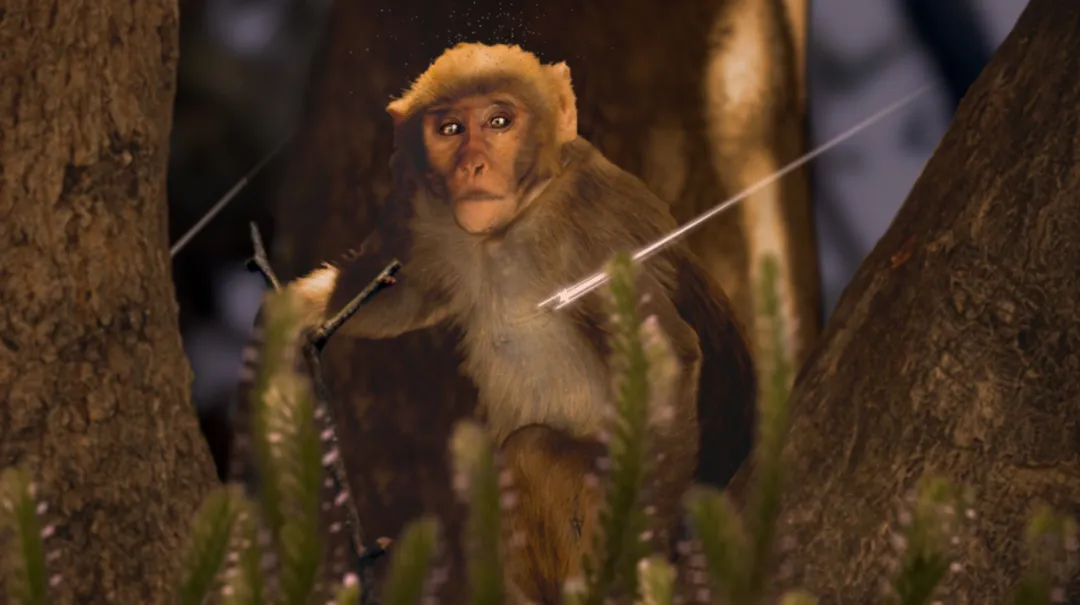 Zhu Changquan, I’m Disguised, Right in front of You, 2021. Dual channel video, 10'00''. ©Courtesy of the artist and Vanguard Gallery.
Zhu Changquan, I’m Disguised, Right in front of You, 2021. Dual channel video, 10'00''. ©Courtesy of the artist and Vanguard Gallery.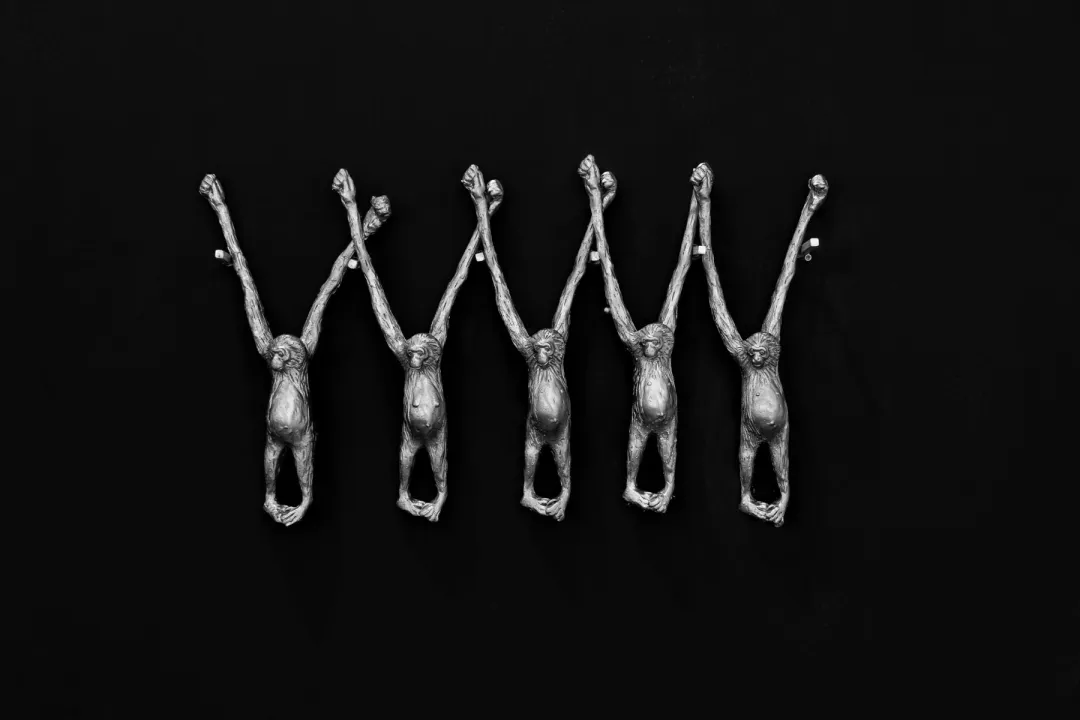 Zhu Changquan, I’m the Visitor, 2021. Tin-bismuth alloy, Dimensions variable. ©Courtesy of the artist and Vanguard Gallery.
Zhu Changquan, I’m the Visitor, 2021. Tin-bismuth alloy, Dimensions variable. ©Courtesy of the artist and Vanguard Gallery.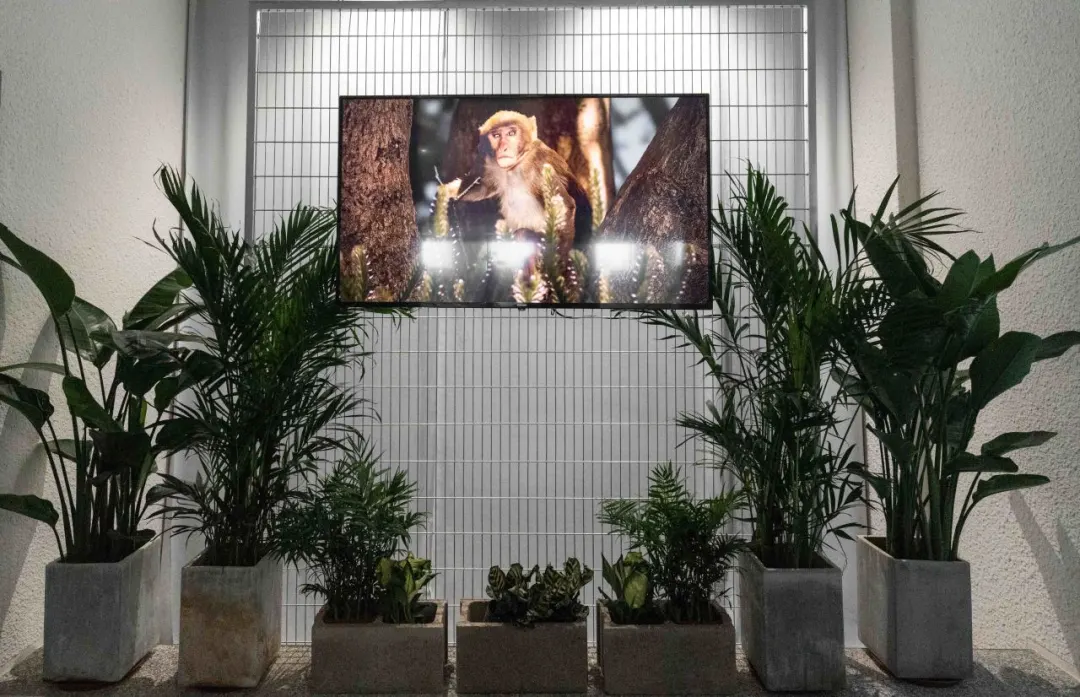 Exhibition View
Exhibition View
In recent years, artist Cao Shuyi’s creations aim to transcend the biological framework itself and trace back to the more ancient life history of the “pre-human” epoch, imagining the intricate transformation process between organic and inorganic matter caused by crustal movement. When conceiving the art work Odont I-VIII (2023), the artist traveled to Weng’an, Guizhou, to visit a fossil group preserving primitive life from 600 million years ago through phosphate mineralization. She collected scattered phosphogypsum, blended it with pottery, and shaped it in a perceptive way. The ultimate manifestation of the work points to the non-linear evolutionary form of life, as hoped by the artist, constructed by time, matter, space, and body.
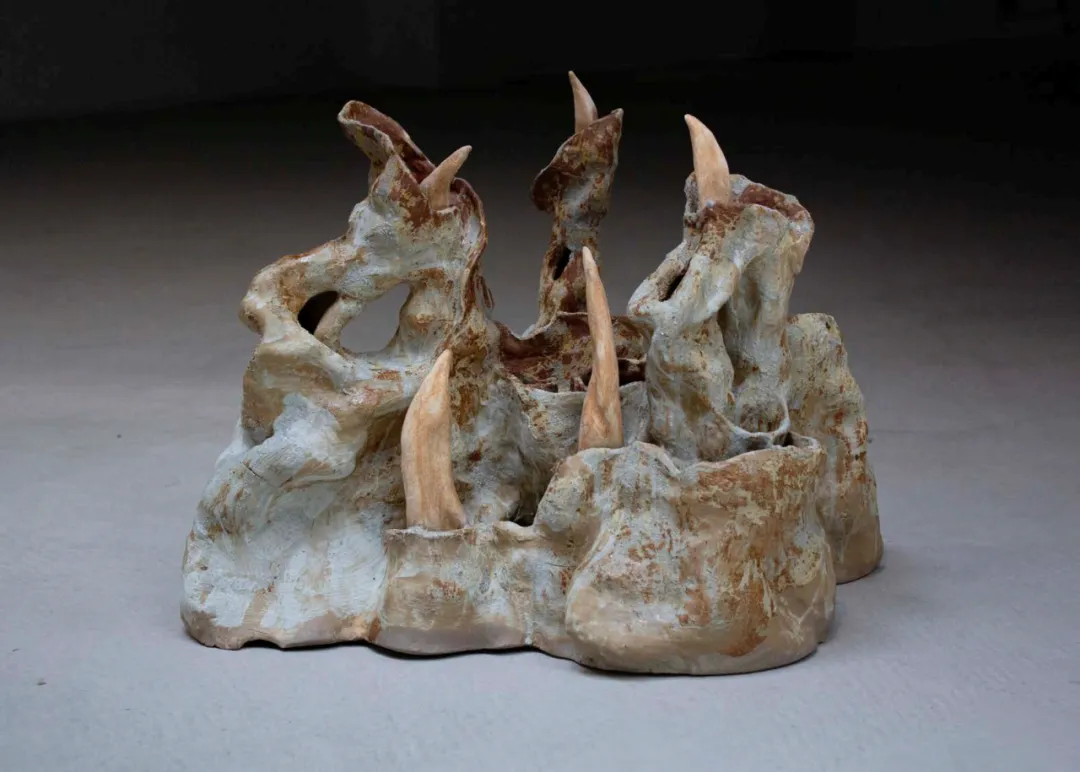
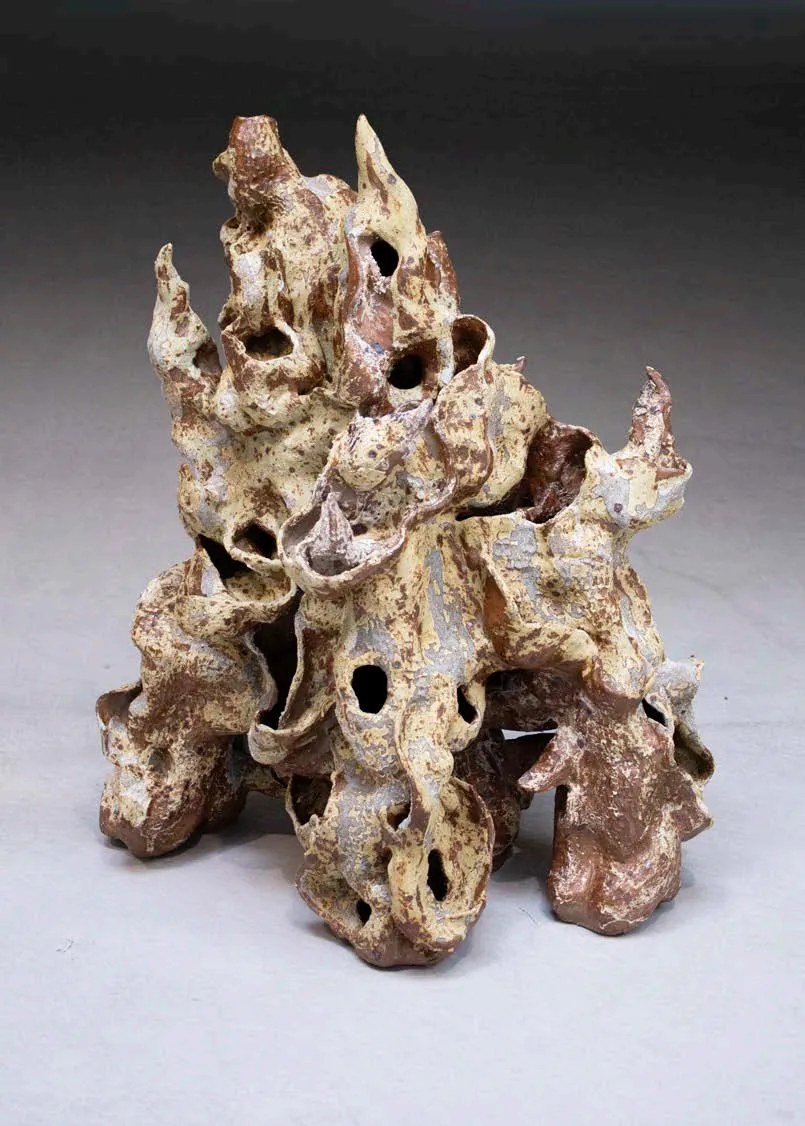
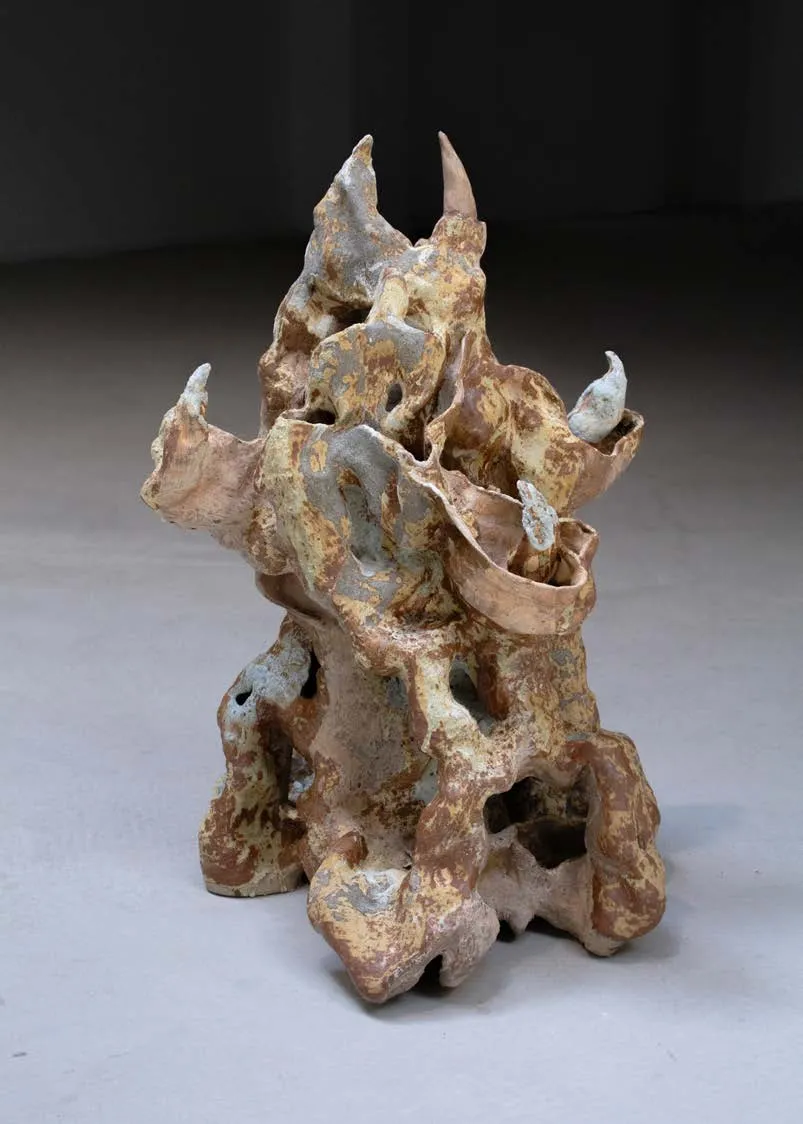
Cao Shuyi, Odont I-III, 2023. Stoneware, phosphorite, bauxite, galena, Dimensions variable. ©Courtesy of the artist and Hive Center for Contemporary Art.
Compared with the billions of years of the Earth’s existence, the temporal span of human presence in this world appears diminutive and ephemeral. However, during this brief evolutionary process, as the dominant species on Earth, humans have not only defined all the visible organisms but also occupied the top position in the food chain. Nevertheless, the not yet fully regressed “animal nature” manifests itself in various forms in human society. These oppositions and conflicts as well as concealment and dangers will ultimately fall into the causal relation of being counteracted by nature.
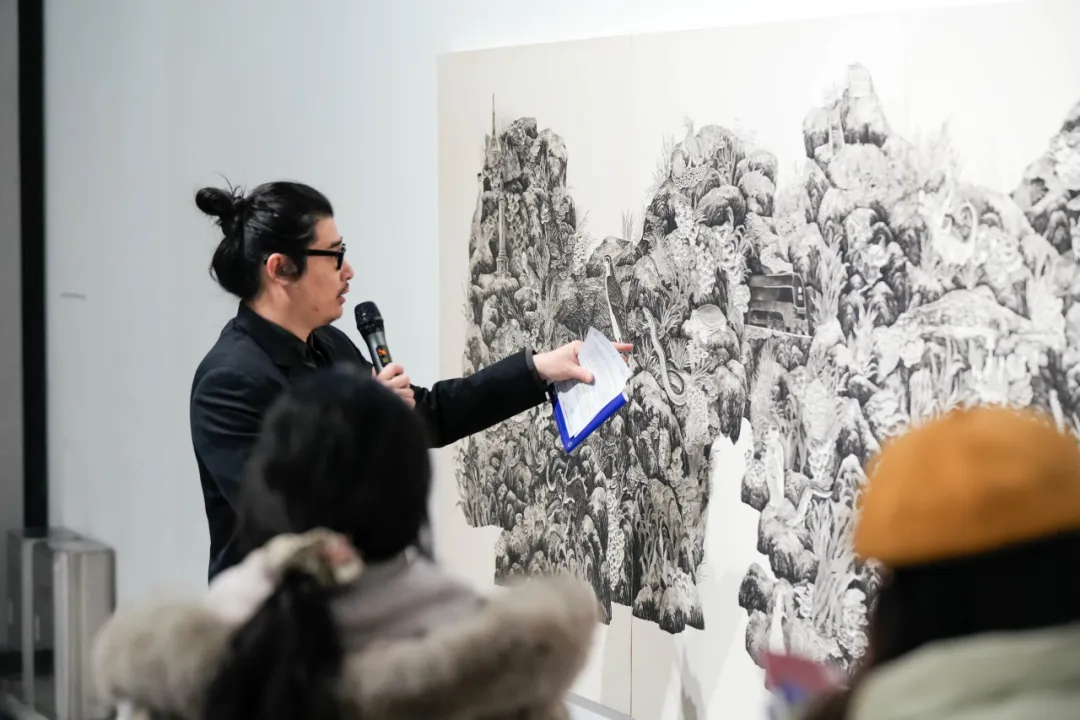
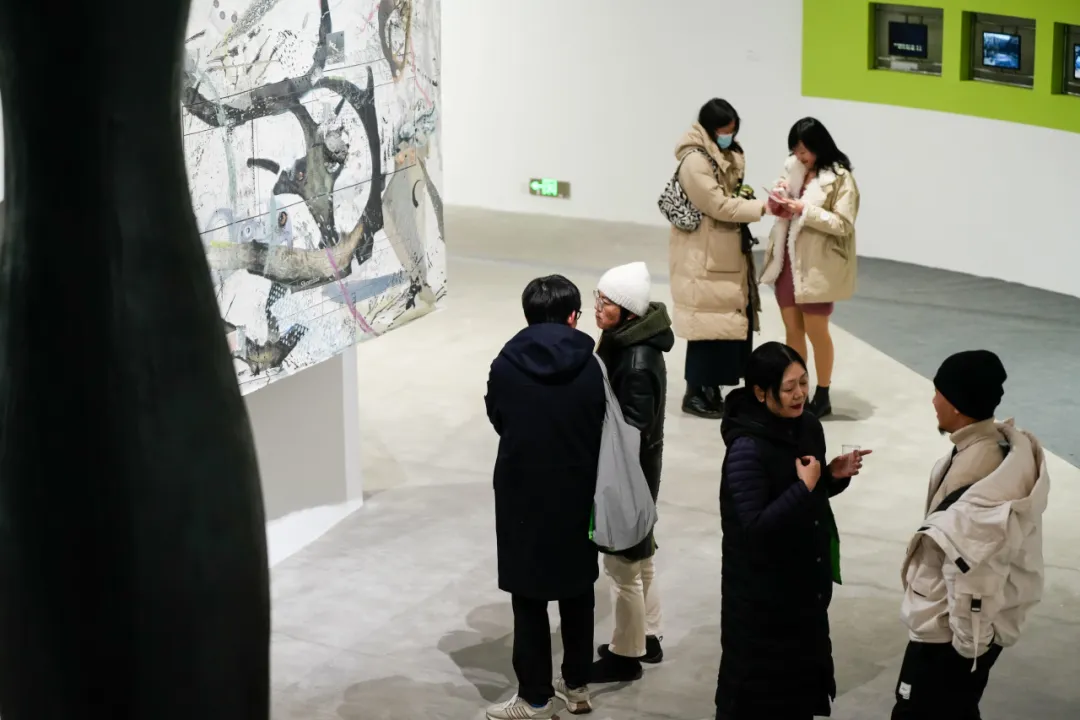
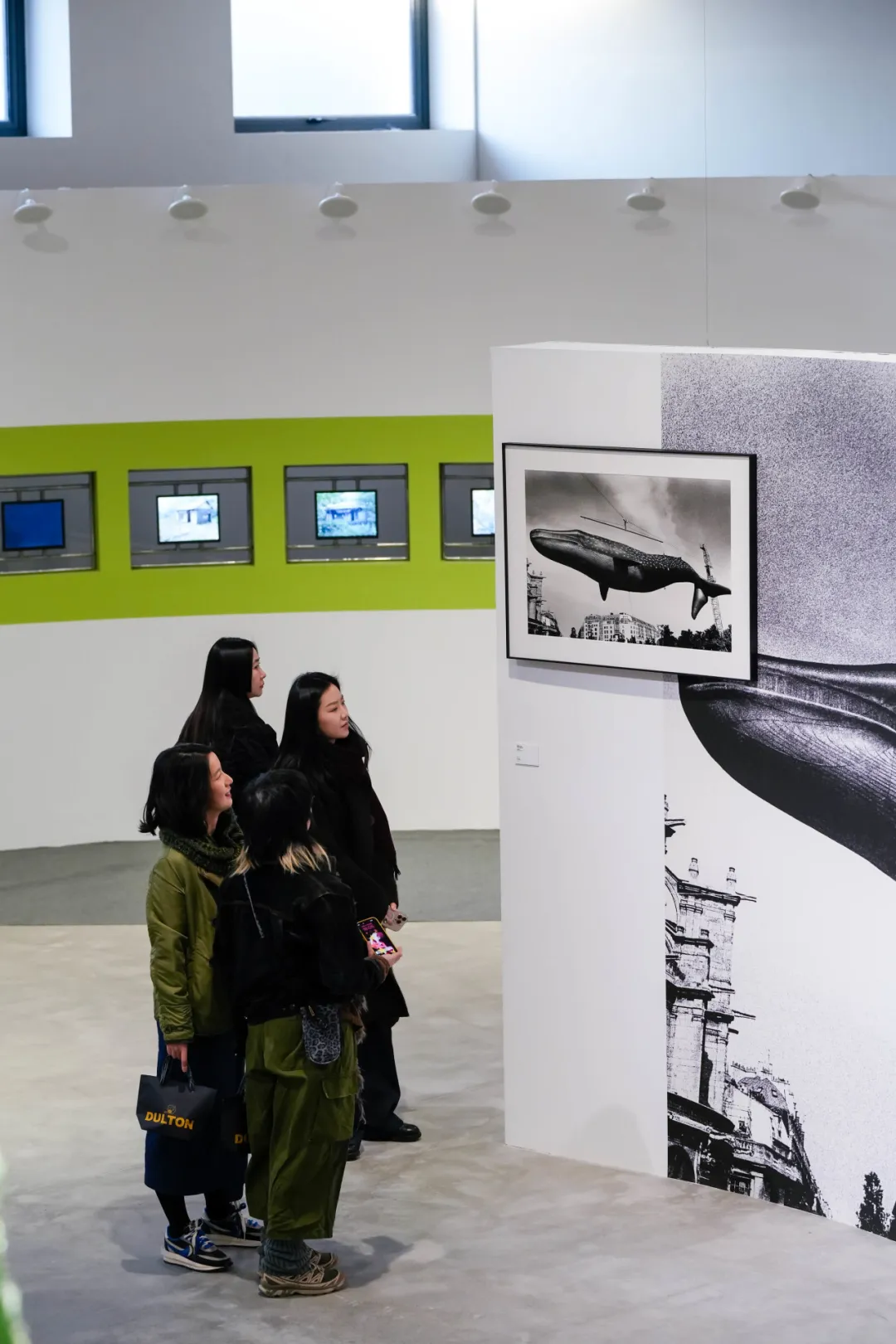
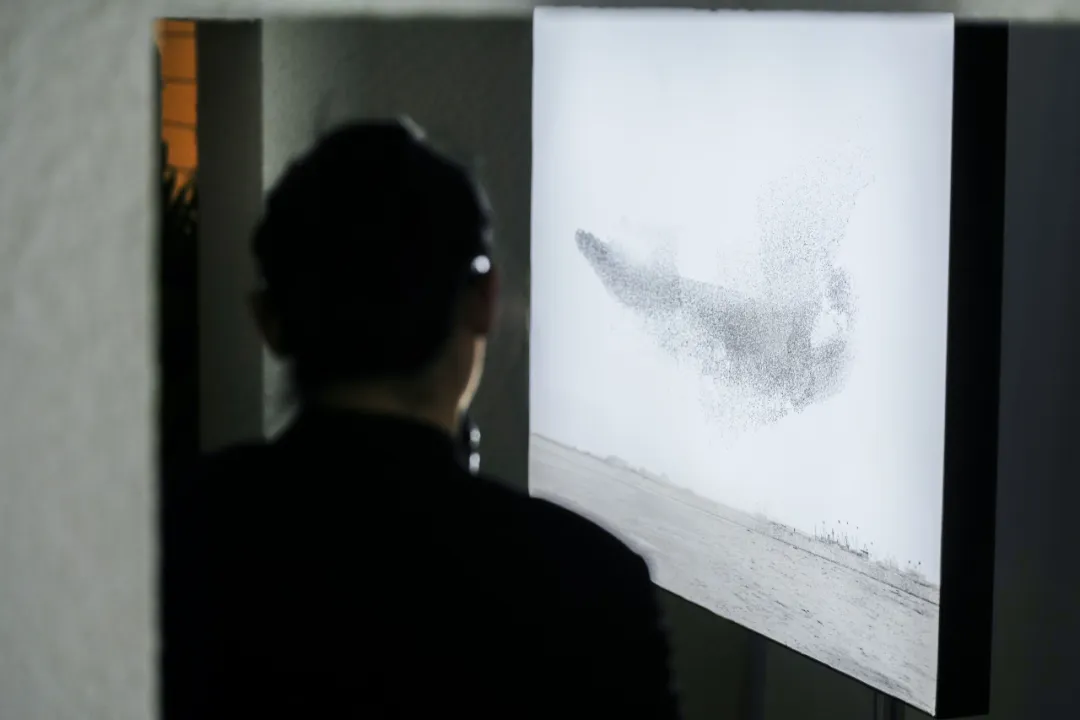
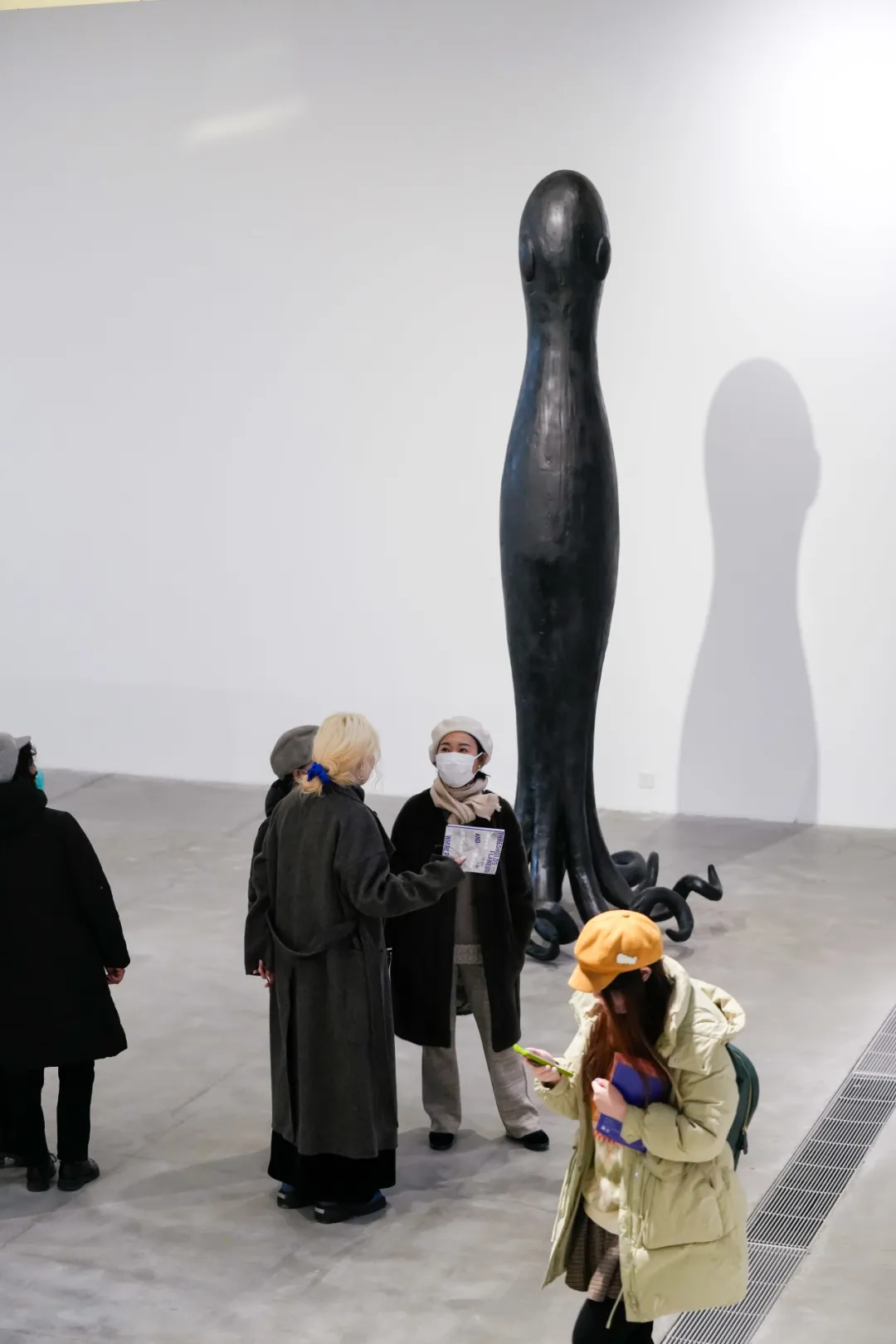
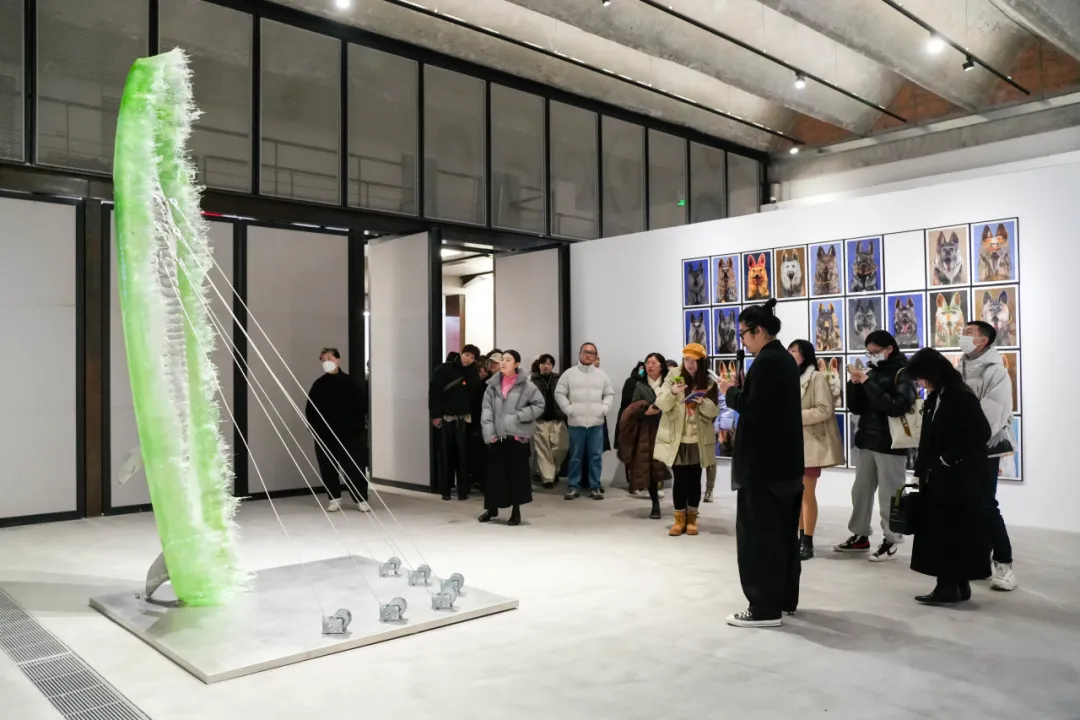 View of the Opening Ceremony
View of the Opening Ceremony
References:
1. Red Brick Art Museum Collection, http://www.redbrickartmuseum.org/collection/#gallery-14-2.
2. Jerome Sans. China Talks: Interviews with 32 Contemporary Artists [M]. Timezone 8, 2009: 25.
3. Qiu Chen. “Dong Jinling: As long as it is sincere, art is politics” [EB/OL]. September 6, 2024. https://mp.weixin.qq.com/s/6BPqoZbxnAWhi62UrTMgYQ.
4. Long Yuanzhi. “Animal Absence: Non-human Animals in Contemporary Art” [EB/OL]. March 22, 2022. https://mp.weixin.qq.com/s/yGzFI3pc5e8PHU-j6tMFzQ.
5. ShanghART Gallery. "Reshaping Nature: Zhao Renhui's Multidisciplinary Practice" [EB/OL]. March 27, 2023. https://mp.weixin.qq.com/s/3Ojx8Tgtwj-Noy_hDA6_YA.
About the Exhibition
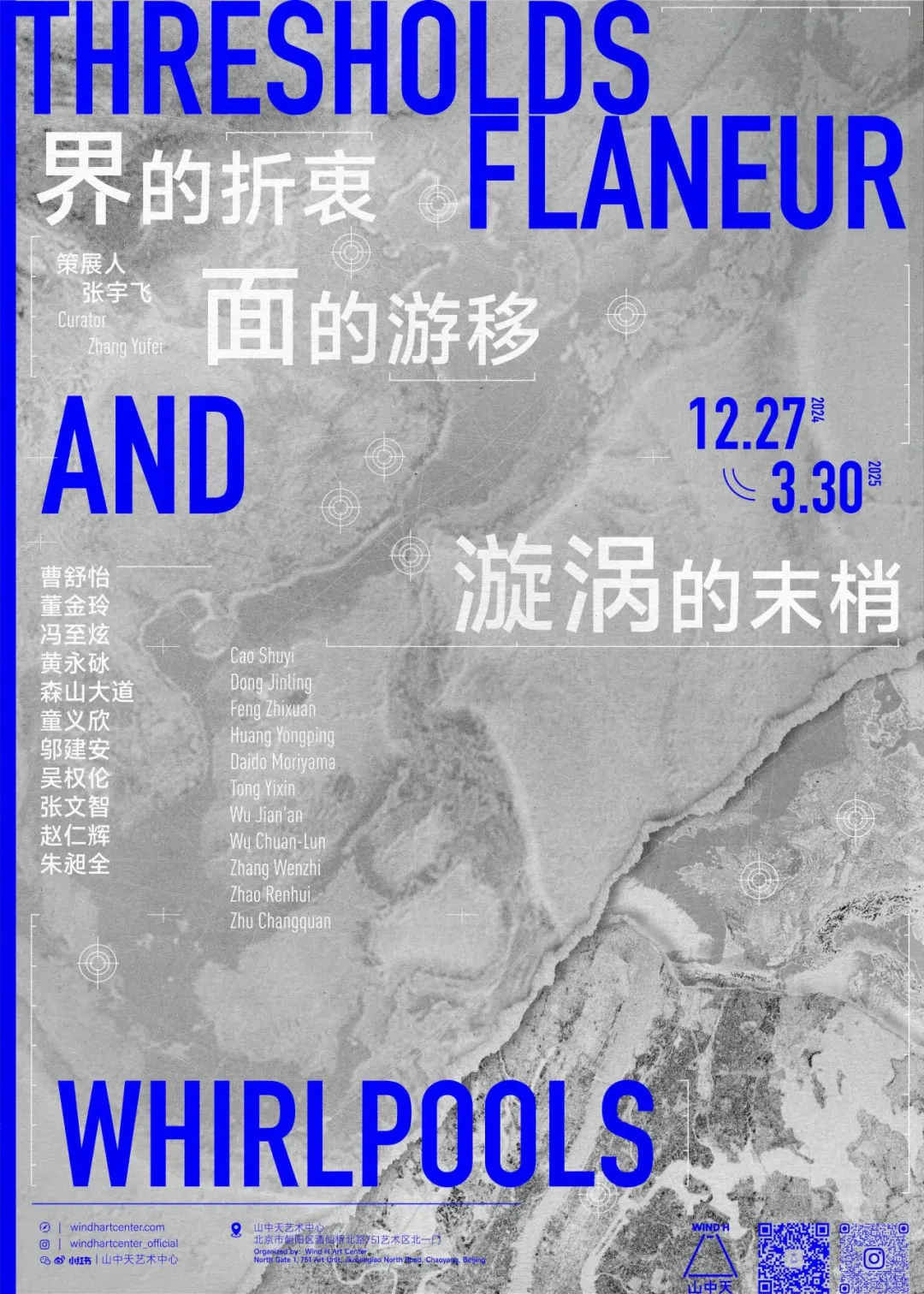 Curator: Zhang Yufei
Curator: Zhang Yufei
Dates: December 17, 2024 –March 30, 2025
Venue: Wind H Art Center
Artists: Cao Shuyi, Dong Jinling, Feng Zhixuan, Huang Yonging, Daido Moriyama, Tong Yixin, Wu Jian’an, Wu Chuan-Lun, Zhang Wenzhi, Zhao Renhui, Zhu Changquan
Courtesy of Wind H Art Center, edited by CAFA ART INFO.


